
The Hakone Town x GOLDWIN Kids Summer Camp returned to Lake Ashi Camp Village in Hakone Town, Kanagawa Prefecture, from the 25th to 27th of July, 2023. Led by adventurer Gota Miura, children from both Hakone and other areas gathered at the camp. Exciting adventures awaited the 15 children each day under the brilliant summer sun.
Maximize your senses!
“Do you know what the five senses are?” The adventurer smiled broadly and began to speak softly to the children, who were filled with a mixture of excitement and anticipation. Then, shy, cheerful, and confident voices burst out.
— Sight, sound, smell, taste, and touch.
“Yes. In this camp, let’s make full use of all five of our senses. Not just seeing and hearing, but also touching and smelling. By doing so, your senses are sharpened, and you can catch the sounds of birds you couldn’t hear before or notice changes in the wind —we call this new sense of expanding your world a sense of adventure. This is not easily acquired just by playing in the park for a day. Let’s immerse ourselves in nature, enjoy this feeling that lies hidden in our bodies, and have a good time at this camp.”
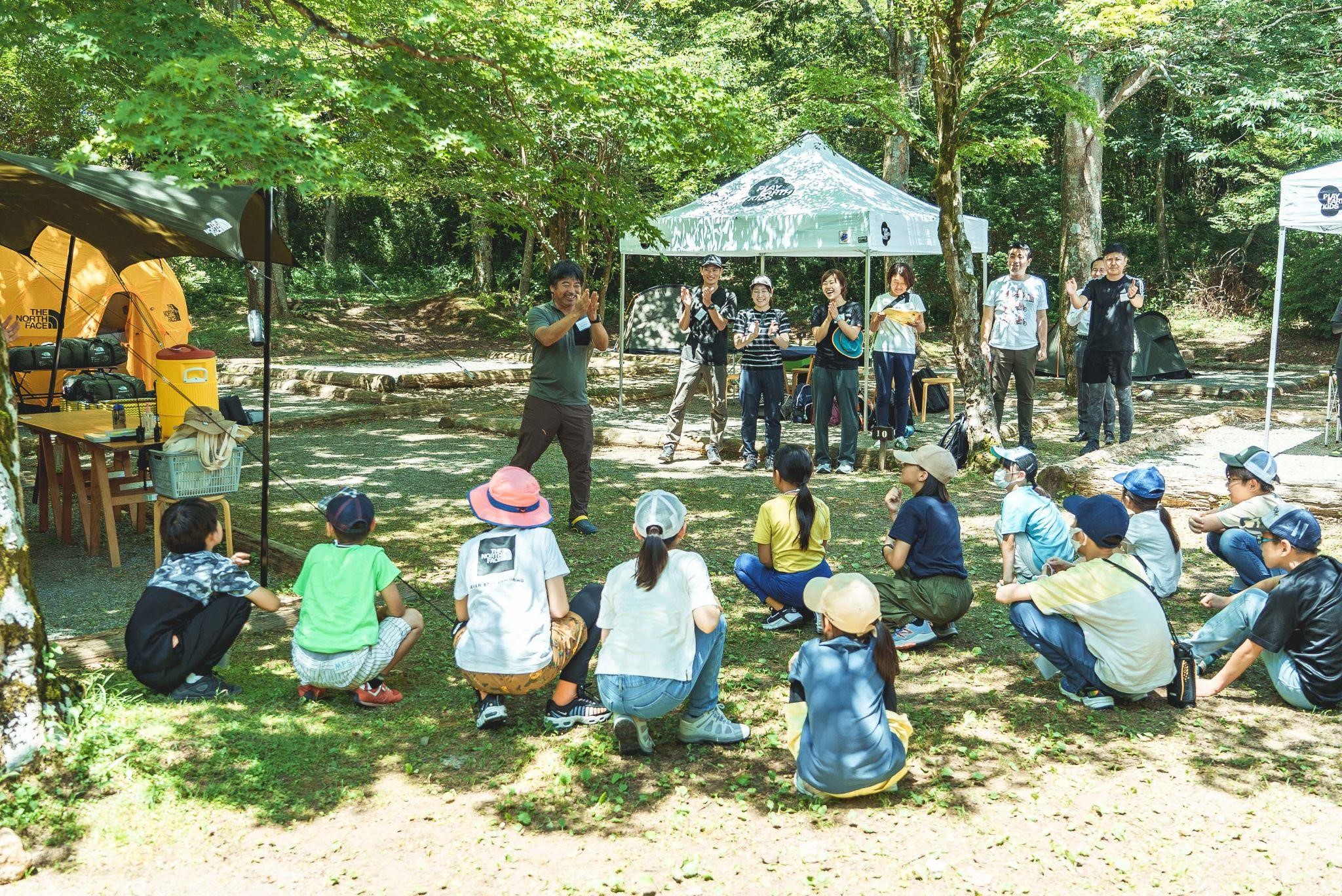
The camp leader is Gota Miura, an Olympic skier who has climbed Everest three times with his father, Yuichiro. Everyone joins him as he shouts out "Here we go!"
Afterward, a variety of fun games were organized to help the kids unwind. The three-day camp kicked off with the children smiling, their voices echoing, and their bodies in motion.
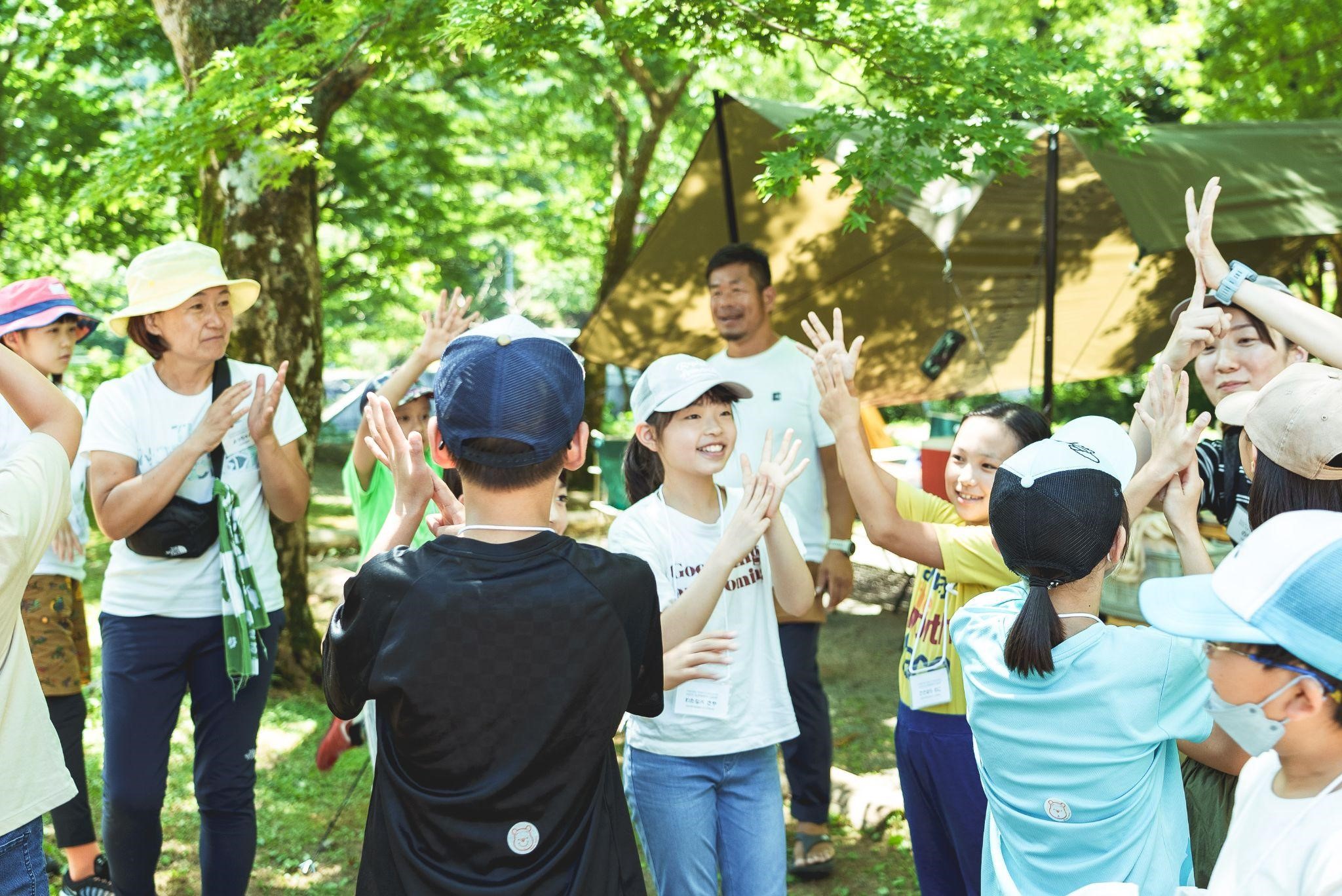
The summer camp started with eight children from three Hakone primary schools and seven participants from outside the town forming a group. They started the experience with an interactive game, fostering connections and easing any initial nervousness.
The Hakone Town x GOLDWIN Kids Summer Camp 2023 took place at Lake Ashi Camping Village in Hakone Town, Kanagawa Prefecture, from the 25th to the 27th of July, 2023. Following last year’s successful event, this marked the second collaborative camp organized by Hakone Town and GOLDWIN, the owner of The North Face and other outdoor brands in Japan. The camp, attended by 15 third to sixth-graders from both within and outside Hakone Town, aimed to provide a unique outdoor experience for the participants.
Children builing relationships
“First, let’s pitch the tents for everyone to sleep in.” The children were divided into groups of roughly three, and tents were distributed. The staff then set up a tent for explanation and watched carefully without interfering. In that short thirty-minute period, with the task of setting up tents ahead, the children formed strong connections, assembling tents and chatting and laughing with one another.
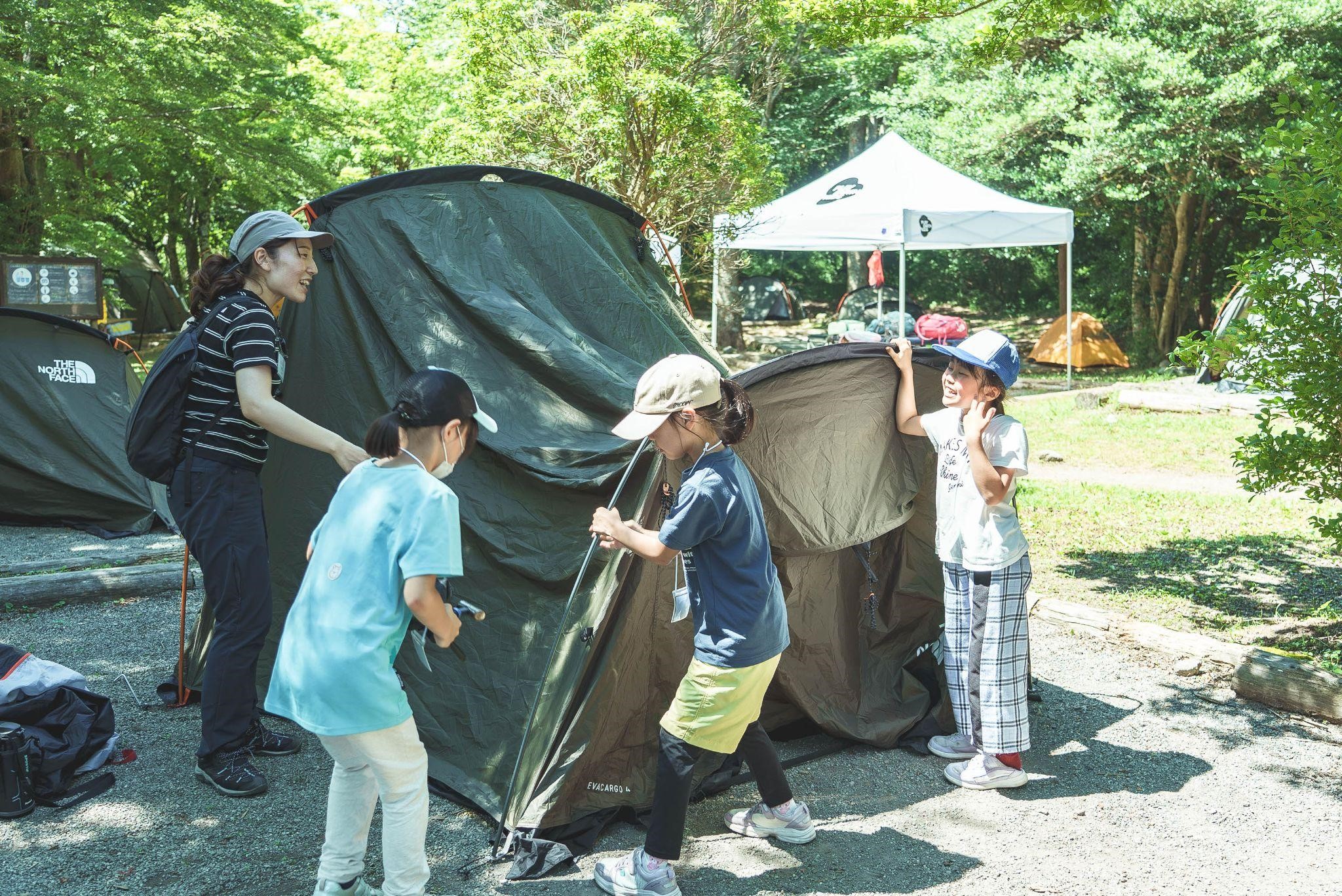
In groups of three or four, they work together to set up their tents, laying out mats, spreading sleeping bags, and preparing the sleeping area. Much to our surprise, this process helped the children to ease in and relax.

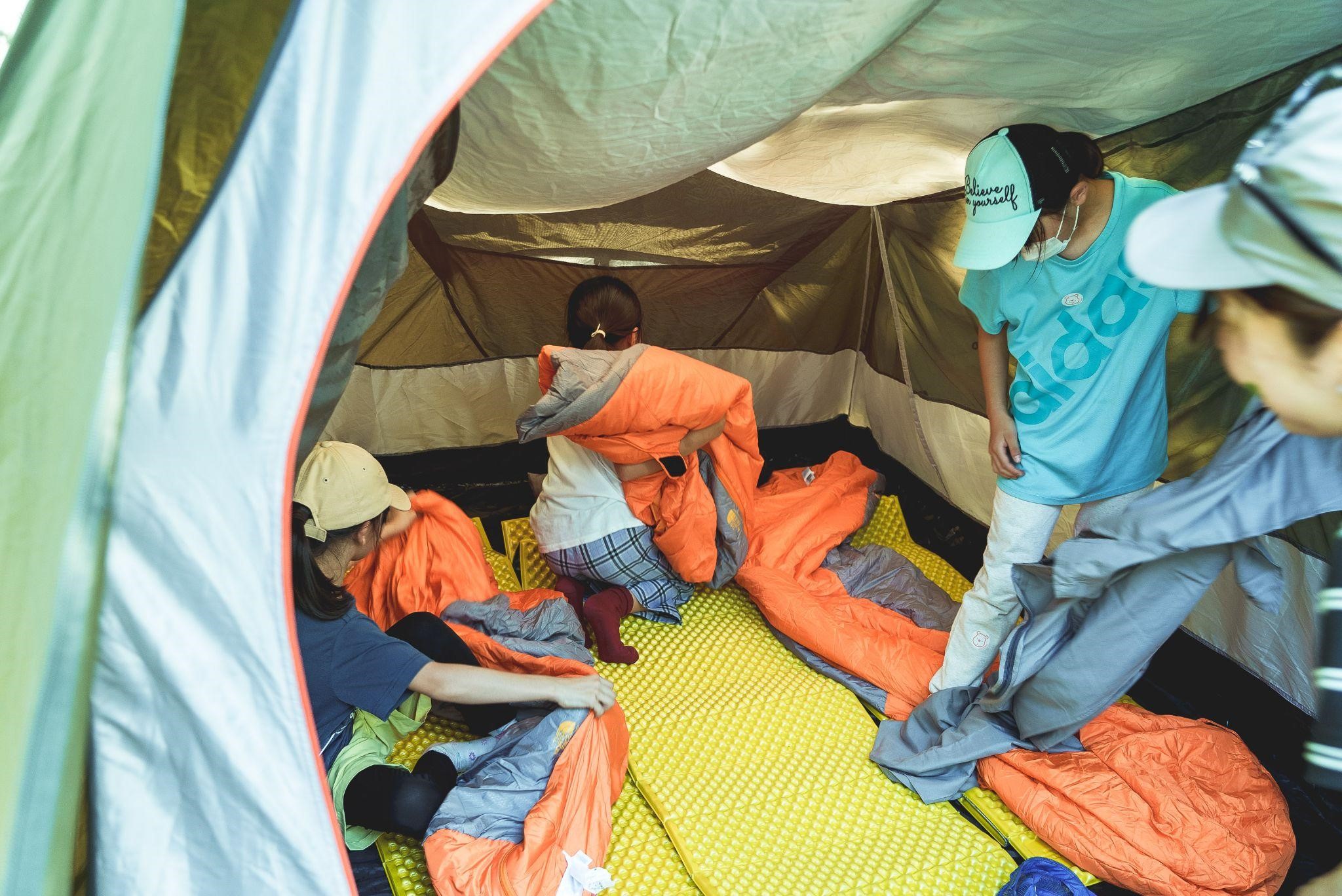
Along the forest path to Hakone Visitor Center
After setting up our tents, we walked to the nearby Hakone Visitor Center with nature guide Sota Tsukushi. The afternoon forest echoed with the sounds of Higurashi cicadas as the sun gradually set. Amidst the peaceful surroundings, Sota recognized the song of a bird. “This is the bird described in the encyclopedia as a Meadow bunting.” What does he mean by the word “described”?
“The birds wouldn’t identify themselves as Meadow buntings. The name in the encyclopedia is just for human convenience, to classify them.” Hmmm. That may be true. “Similarly, the habitat or ecology explained in these books is based on human imagination, on what we think they must be.” “Of course, knowing their names is important,” he continued. “But only the birds truly know what is happening. That’s why valuing what you feel is crucial. Each person experiences things differently. So, let’s express our feelings and share them with one another.”
These unexpected words gently opened our eyes to something new. On the way to the visitor center, the children spotted a family of pheasants, lots of cicadas, and deer tracks.
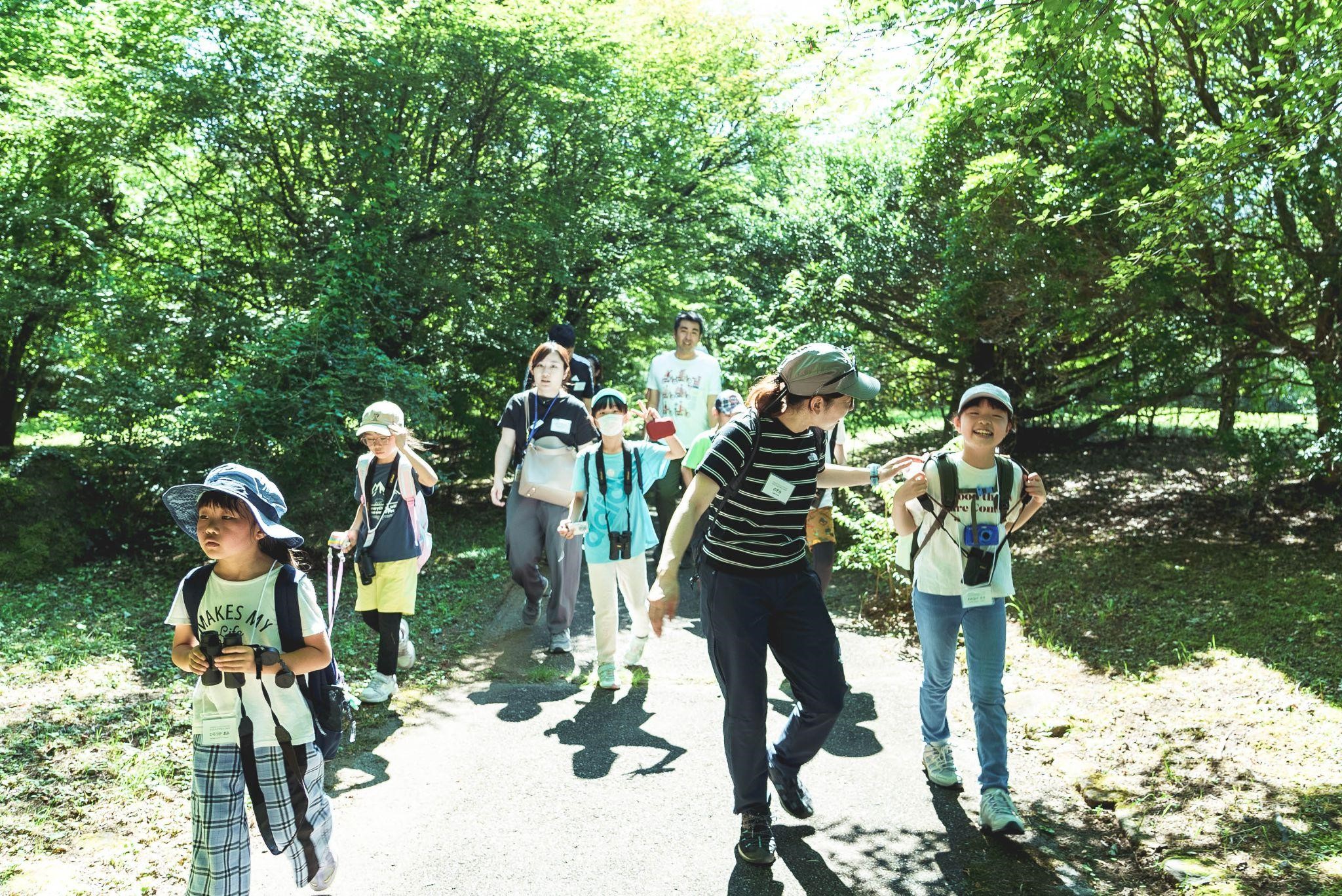

Sponsored by Nikon Vision, we had access to microscopes and binoculars.

With binoculars in hand, the children observed birds and clouds.
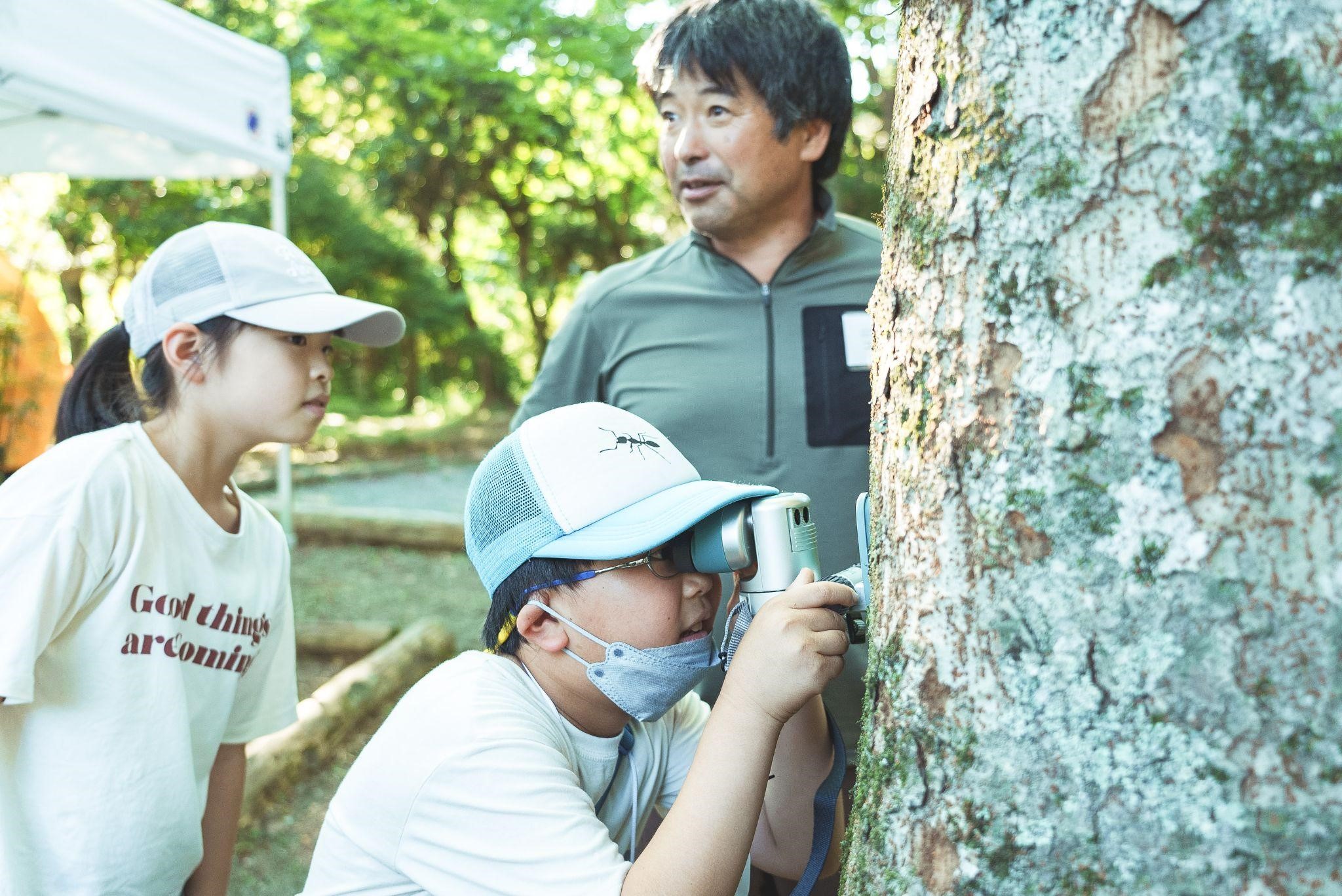
We used a detachable microscope to explore bark, and marveled at the beauty of cicada feathers.

Spending time outdoors or traveling is special because it allows us to imagine a world beyond the sea or discover nature's profound beauty right below our feet.

At the Hakone Visitor Center, we learnt about the origins of Hakone's unique geography and the curious creatures that live there.

Adventure lecture by Gota Miura
After returning from the Visitor Center, Gota Miura began his adventure lecture. He presented a slideshow of his Everest climb with his father, Yuichiro, and shared untold adventures on the world’s highest mountain.
“This is Western Khumbu, a valley surrounded on three sides by Everest (8,848 m), Lhotse (8,516 m), and Nuptse (7861 m). Night temperatures can drop below -30 °C, but what do you think the temperature is in the sun during the day?” Various voices from the children chimed in with guesses: -15 °C, -10 °C, 0°C, 5 °C, etc. But the surprising answer was 50°C!

“After this talk, everyone will make hashed beef with rice, which is also a worthy adventure as it ties lives together in the field—of course, answering nature’s call, too! ” Answering nature’s call? Smiling in response to the children’s question, Gota shifted the conversation to the toilet situation on Everest.
“One time, we were in a tent at 7,500m altitude when a blizzard hit and my father let out a sigh. With oxygen and fuel running low, even my father, a seasoned adventurer, must have been pushed to the edge. Thinking so, I called out to him, and he replied: ‘Now I’m debating whether I should go pheasant shooting or not.’ Pheasant shooting, in this context, means taking a break for personal needs. However, at an elevation where only 1/3 of the air remains above the ground, your stomach caves in, and breathing becomes difficult. I recommended that he should go. It certainly is an adventure to use the toilet with a safety rope, but there I was, climbing up the mountain right behind my father, looking up at his buttocks.”
So, Yuichiro ventured into the midst of the blizzard, and when he returned to his tent about five minutes later, he exclaimed: ‘Oh, oh, I thought I was going to freeze to death on my buttocks. This is the real cold-ass being,’ playing with a Japanese word and using a pun. “This is the true adventurer,” Gota added. “It’s not just stubbornness that supports adventures, he adds. “It’s important to have an open mind and a certain kind of humor.”
He mentioned that adventurers are inherently selfish — individuals relentlessly pursuing what they love to do. “This means you have integrity. So, be confident and go for what you love.”
The Everest expedition team comprised professionals from diverse backgrounds: guides with eight Everest ascents, sherpas handling luggage and preparing meals, mountain photographers capturing the expedition, and more. “By following our passions, we became professionals in our respective fields, each contributing our specialties and supporting one another.”
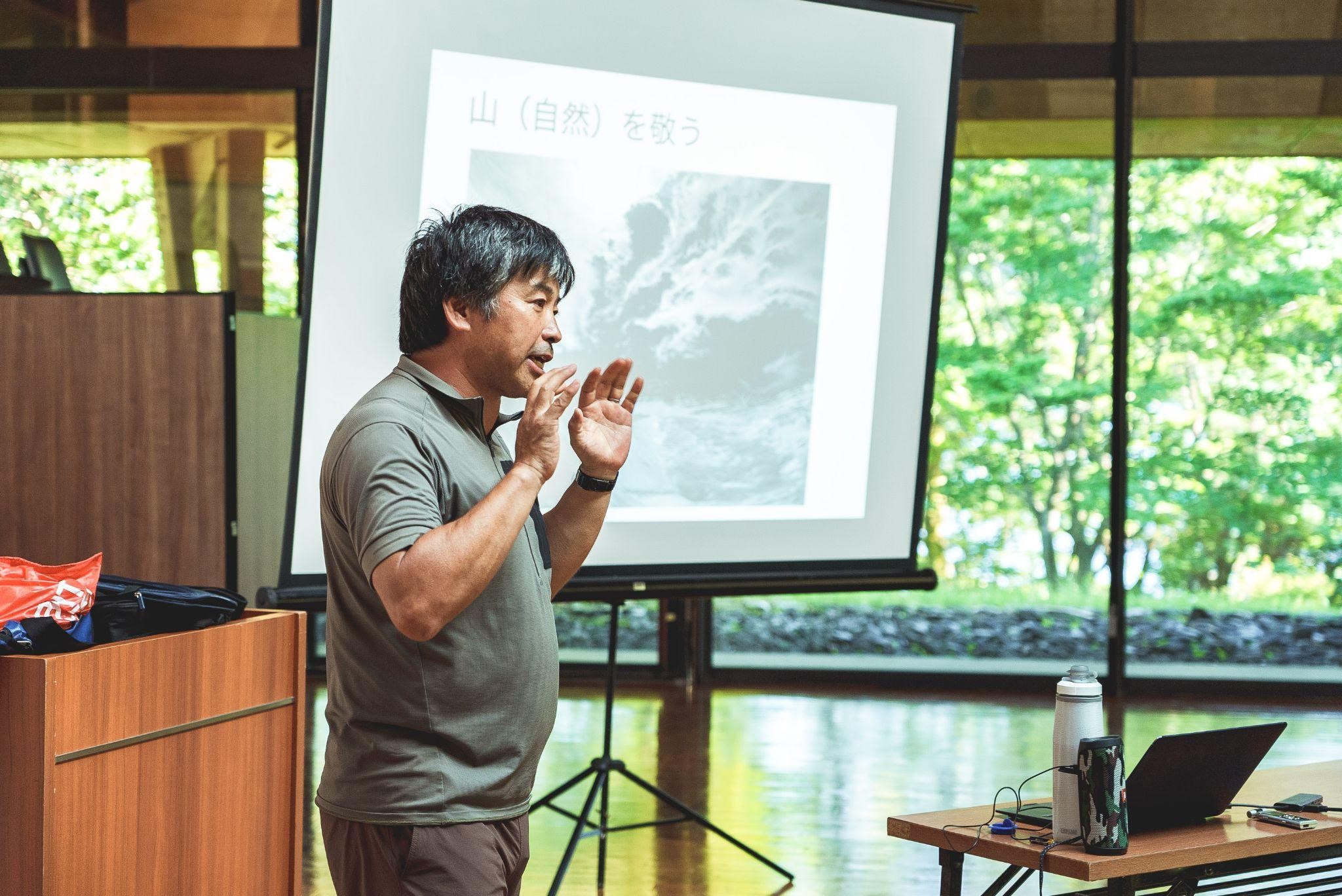
Gota smiled, saying, “I believe true friends not only get along but also collaborate toward a common goal.” Gota then displayed a picture on the screen of a large cloud swirling around Mount Everest. The children couldn’t help but gasp in amazement. “Yes, I also saw this cloud as a dragon. If mountains and the earth have a will, I believe they manifest this way. It’s perhaps why people worship mountains as gods.”
Whether in the Himalayas, Hakone, or the small pockets of nature nearby, Gota believes that gods surely reside. He embraces this mindset when connecting with nature. “To cherish your dreams or what you want to do, care for your friends, and respect nature. These are the three messages I’d like to share with everyone. Let’s have a lot of fun at the camp today, tomorrow, and the day after!”
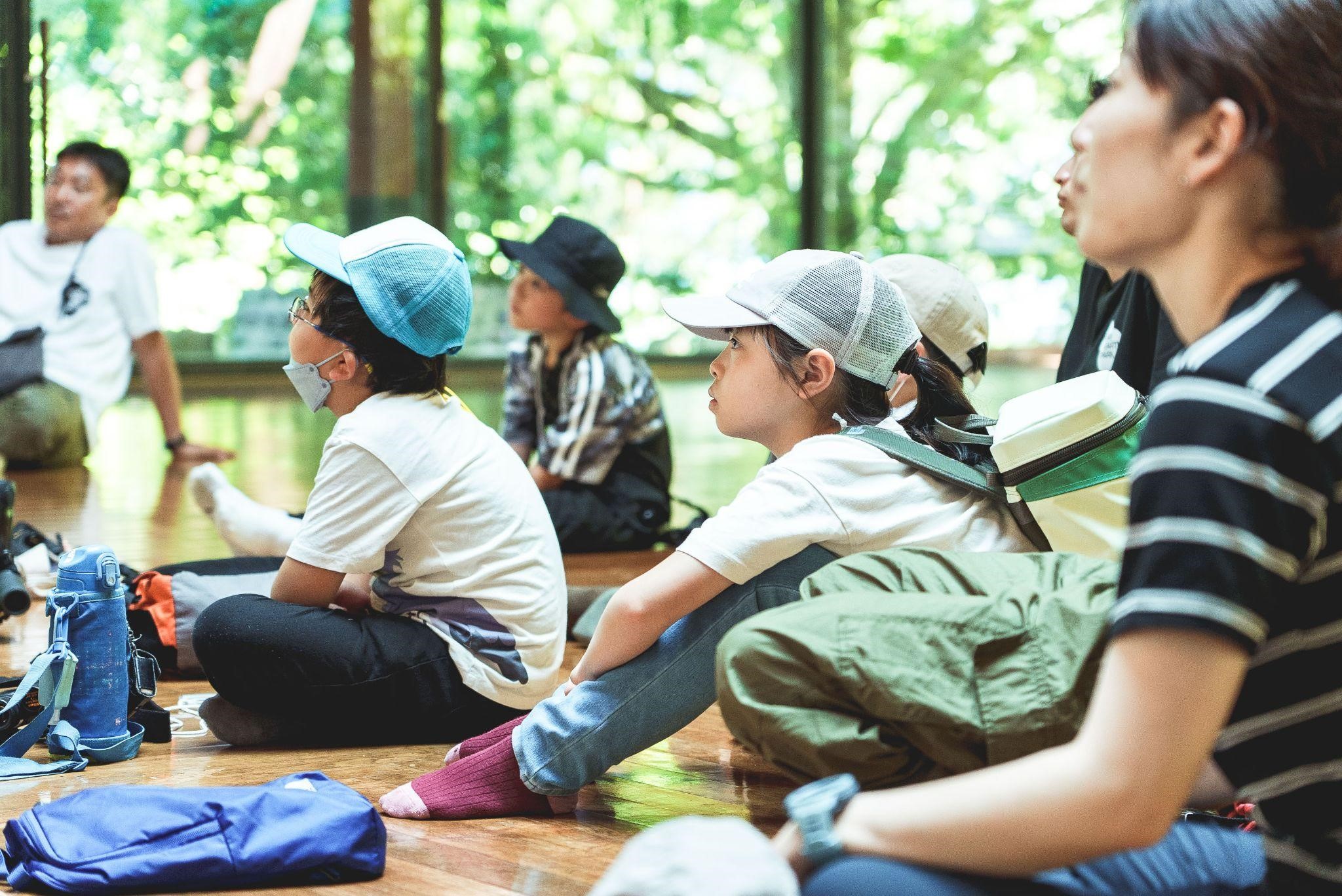
One of the unique features of the summer camp is that adventurer Gota Miura will be with the children for three days. Not as a skier or an adventurer, but from the perspective of a former child who loves nature, Gota conveys the joy of adventure and the outdoors. His encouraging words about “cultivating what you love” will surely inspire the children.
The evening menu featured hashed beef with rice and a fresh salad. “It’s interesting how the three groups end up with different styles, even though all the ingredients are the same and in the same amounts!” remarked Gota, who enjoyed three bowls.


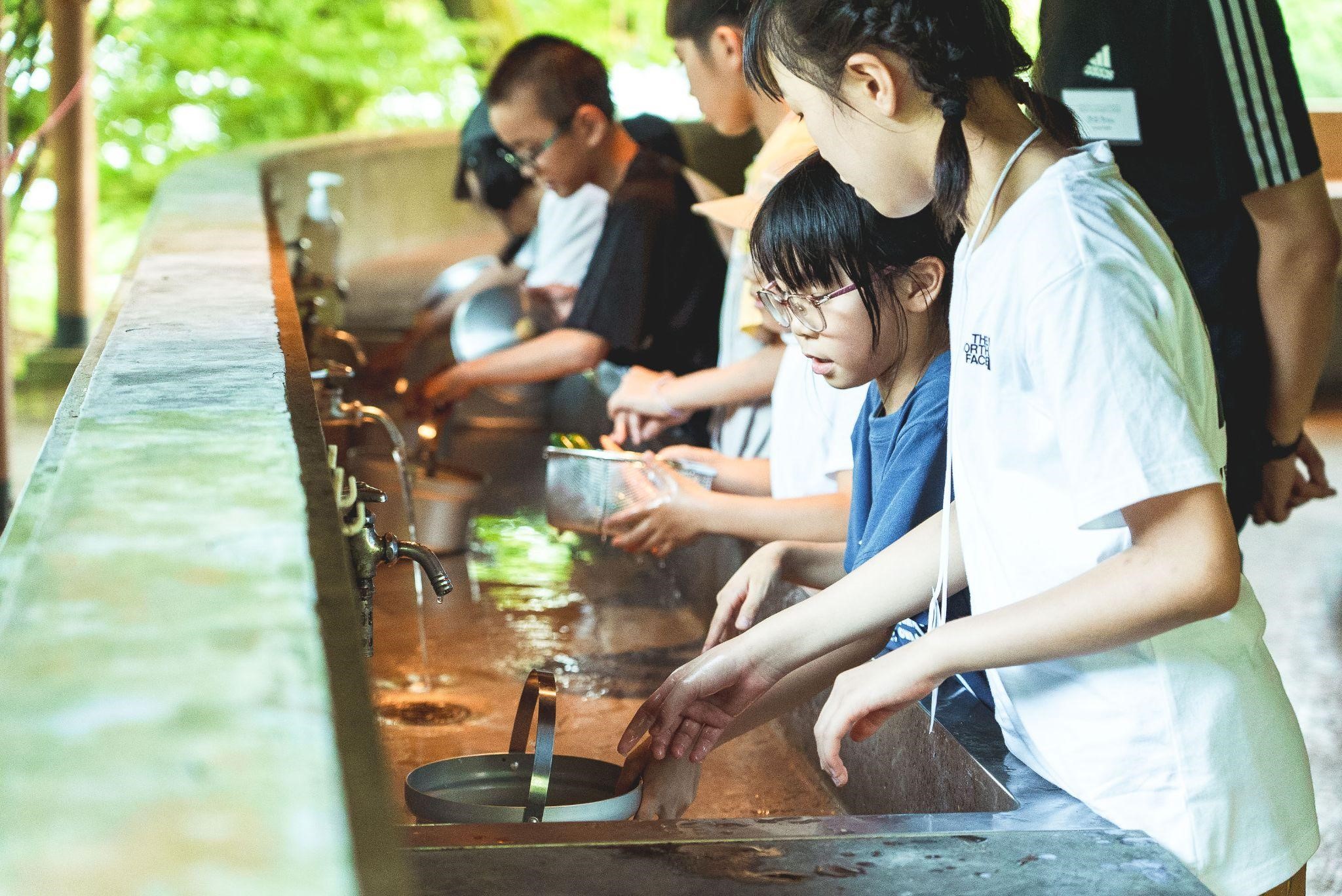

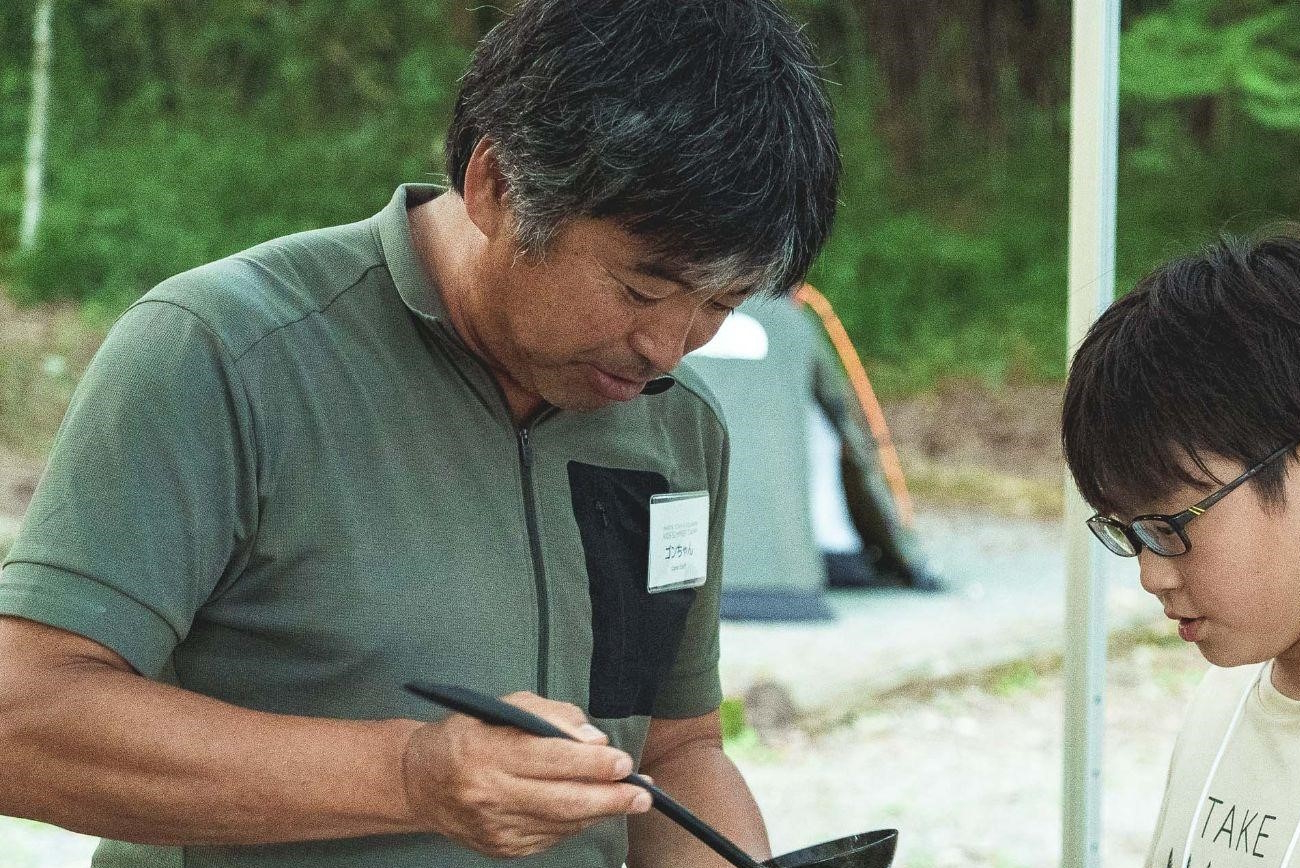
Stargazing after dinner

After dinner, Tamami Yamaguchi of the Hakone GeoMuseum organized a stargazing session. In the night sky, with a slender moon above, more stars twinkled than one can see in the city.
“The conditions are excellent today,” Tamami assured us and taught us how to locate Polaris, the starting point when searching for the summer constellations. A yellowish star appeared as we extended our gaze beyond the end of the Big Dipper’s form.
“Now, let’s check if the yellowish star is actually Polaris.”
She lifted her right arm to eye level, folding her hands as if holding the long end of the Big Dipper. Then, she made a fist with her left hand, also extended, and placed it on her right fist. Repeating the process, she stacked the right fist on the left fist. “One fist equals 10°, so three fists equal 30° and the shining star found there would be Polaris. So, we can now say that what we see is indeed Polaris.”
A large astronomical telescope, the eVscope2, was set up, and the captured images were projected on a screen. The double doughnut-like shape is because the red outer and blue inner star are seen as one—a star named Ring Nebula, M57, about 2,600 light years away.
The stars visible to us today are hidden on cloudy days, while beyond the seemingly pitch-black sky, stars exist, though telescopes barely capture them. The idea that the visible world is not the only reality broadens the horizons of our minds.
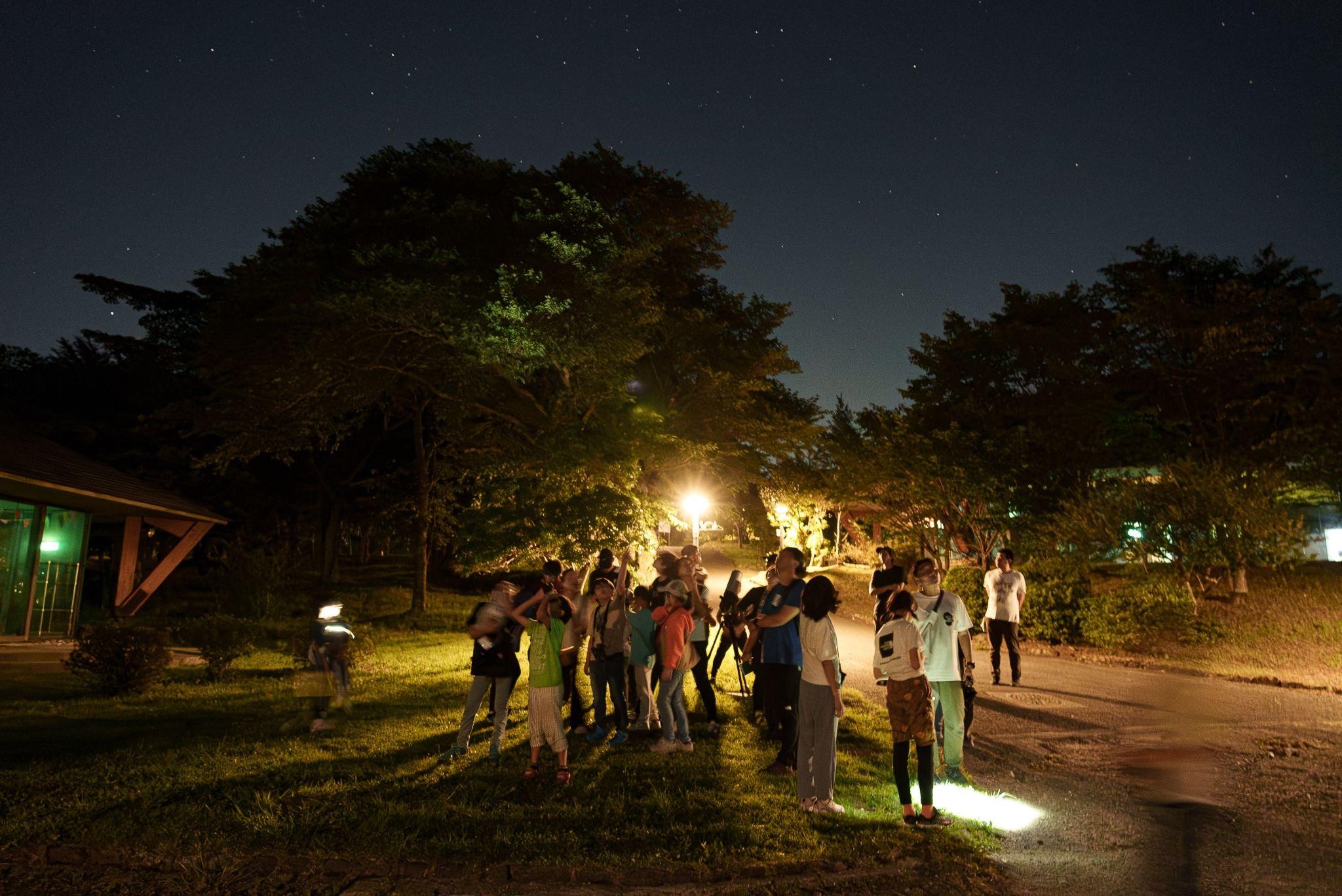
After dinner, a stargazing session opened our eyes to the vastness of the night sky. Learning to navigate using the North Star felt like stepping into the shoes of an adventurer from the Age of Discovery, creating a sense of excitement!
Hiking the mountains with a treasure map in hand
The next day, the excitement kicked off with a mountain climb in the morning. Some children, eager to start, were up as early as 4 am!
After breakfast, Gota laid out a map for the children, pointing out ridges, valleys, and peaks represented by contour lines. He emphasized the distinctions between areas with dense contour lines and those without. “Set your imagination free. Depending on how you see it, it could be a treasure map.”

After a hearty breakfast, Gota taught us how to read a map, and we embarked on our mountain climb!


With that, we embarked on an energetic walk along the shores of Lake Ashi, soaking up the glorious sunshine. Sota Tsukushi, our guide, unfolded the wonders hidden in the waters of Lake Ashi. “The warm, moist wind from the sea collides with the mountains of Hakone, forming rain clouds and bringing abundant rain to the area. The forests around Lake Ashi then filter and purify the rainwater, replenishing Lake Ashi with fresh spring water.”
Leaving the lakeside path, the trail ascended towards the Kojiri Pass, with an elevation difference of about 120 m. The initial 70 m was a gentle climb, followed by a steeper ascent of the 40 m. Gota lightened the mood by explaining various plants along the way. He pointed out the Jinenjo-yam, which will eventually bare the Mukago fruit, and highlighted the antibacterial properties of Aoki, the hemostatic properties of Mizuhiki, and the anti-inflammatory properties of Mock strawberry. “This is highly toxic aconite. The earth is powerful and abundant, where edible, medicinal, and even poisonous plants coexist.” His words, expressing care for all aspects of nature, made us stop and ponder for a moment. A breeze from the lake softly slid through.
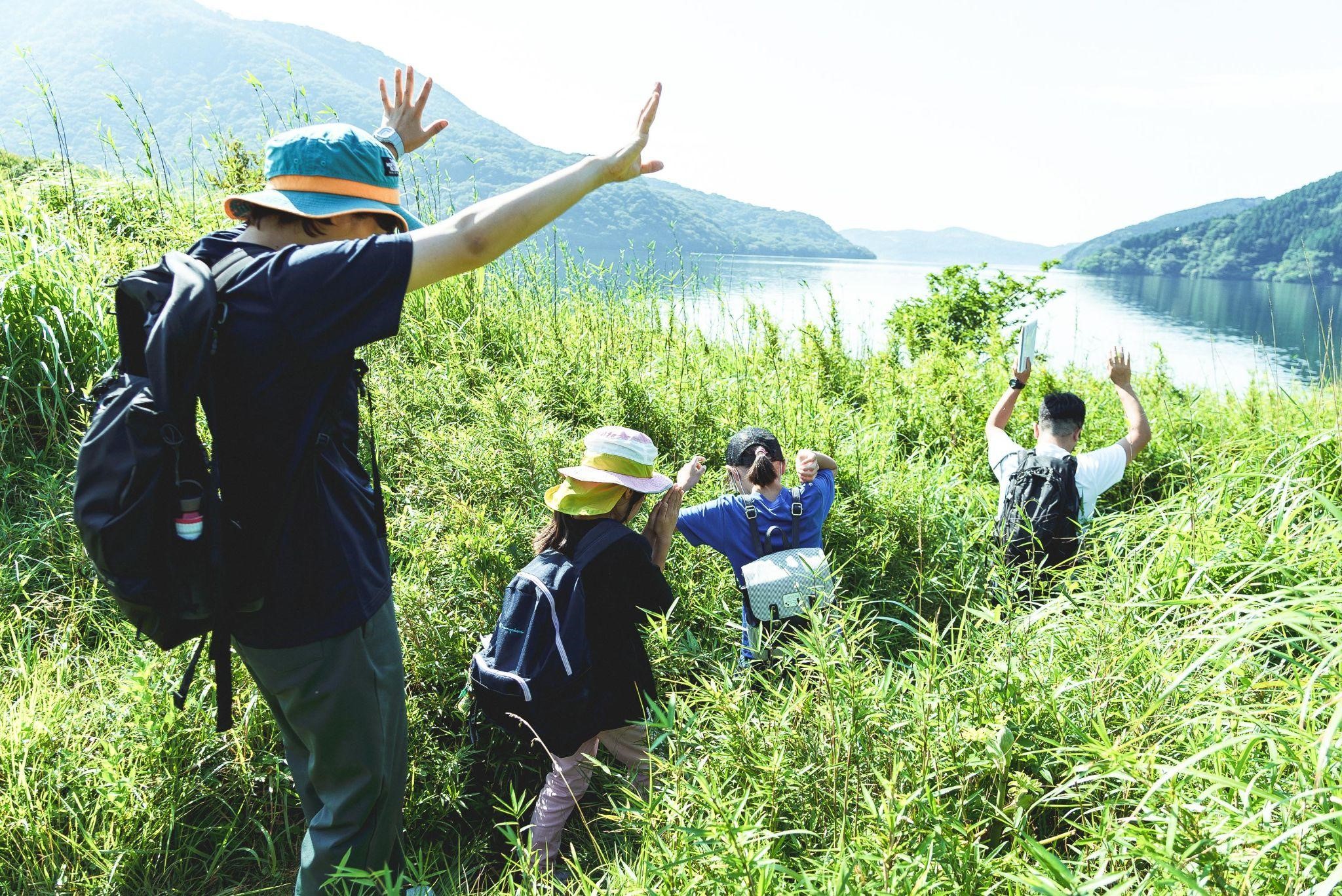
We started with a walk along the shores of Lake Ashi.

Our guide, Sota Tsukushi, showed us that the shoots of the Hakonezasa plant are slightly sweet when sucked.

Gota taught us about edible, medicinal, and dangerous plants.


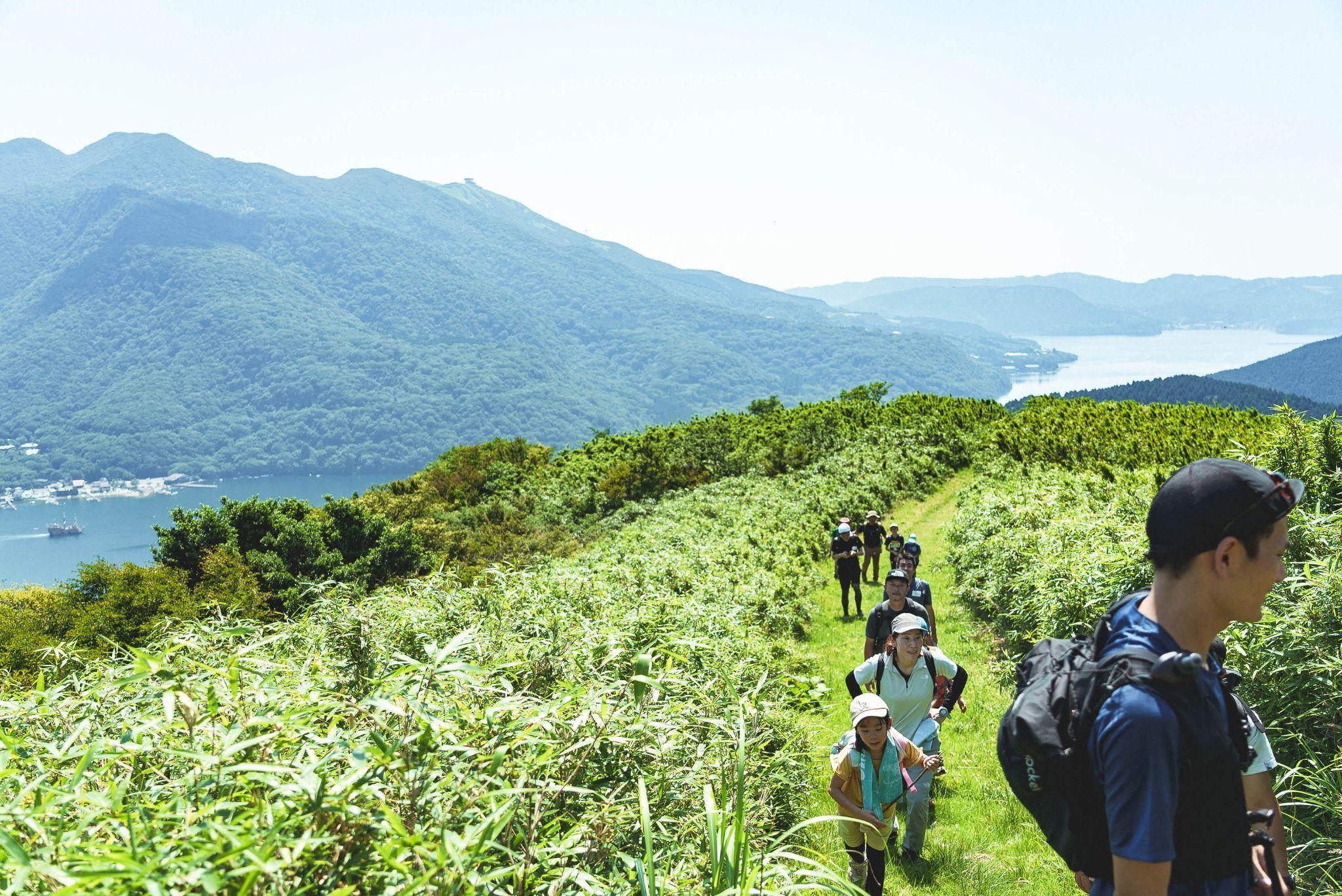
We headed uphill through the forest to the ridge.

An unexpected reward awaited us!

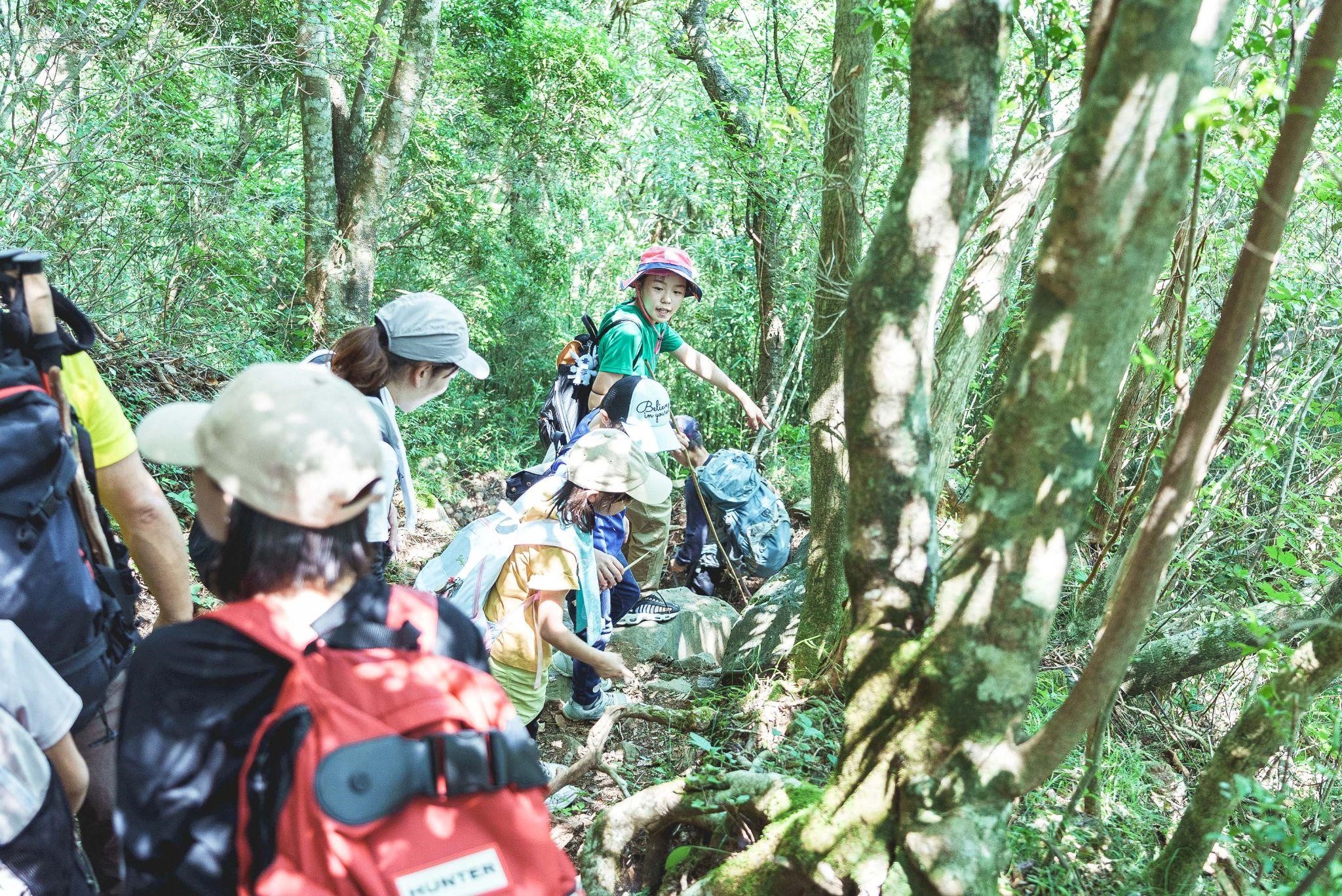
On the way back down to the campsite, the children followed Sota's lead and gave the plants new and wonderful names one after another: Kuma-nomi clown fish, Uncle Beard, Mossy-ball, Mofu-mofu, etc.
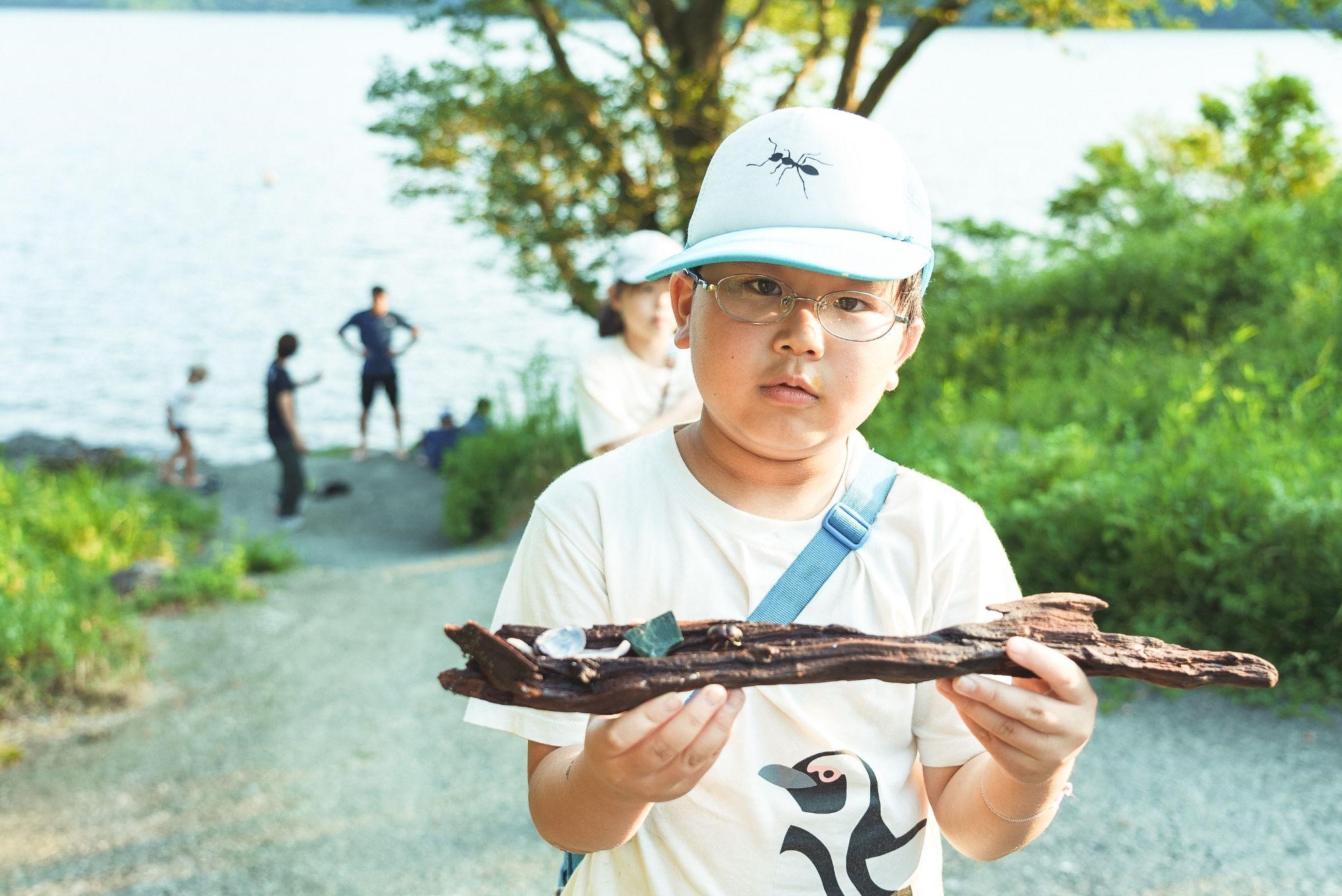
After lunch at the campsite, we headed to the lake to cool off. Gota was thrilled when a fourth-grader, who is enthusiastic about insects, discovered a rare Phelotrupes laevistriatus!
Sensing the something-significant
In the afternoon, we visited the Owakudani GeoMuseum, taking the ropeway. Tamami, who had guided us through the world of stars the previous night, explained Hakone’s unique topography and the volcanoes’ mechanisms that shaped its distinctive climate in simple terms. We could definitely feel something-significant that Gota had discussed the previous day.
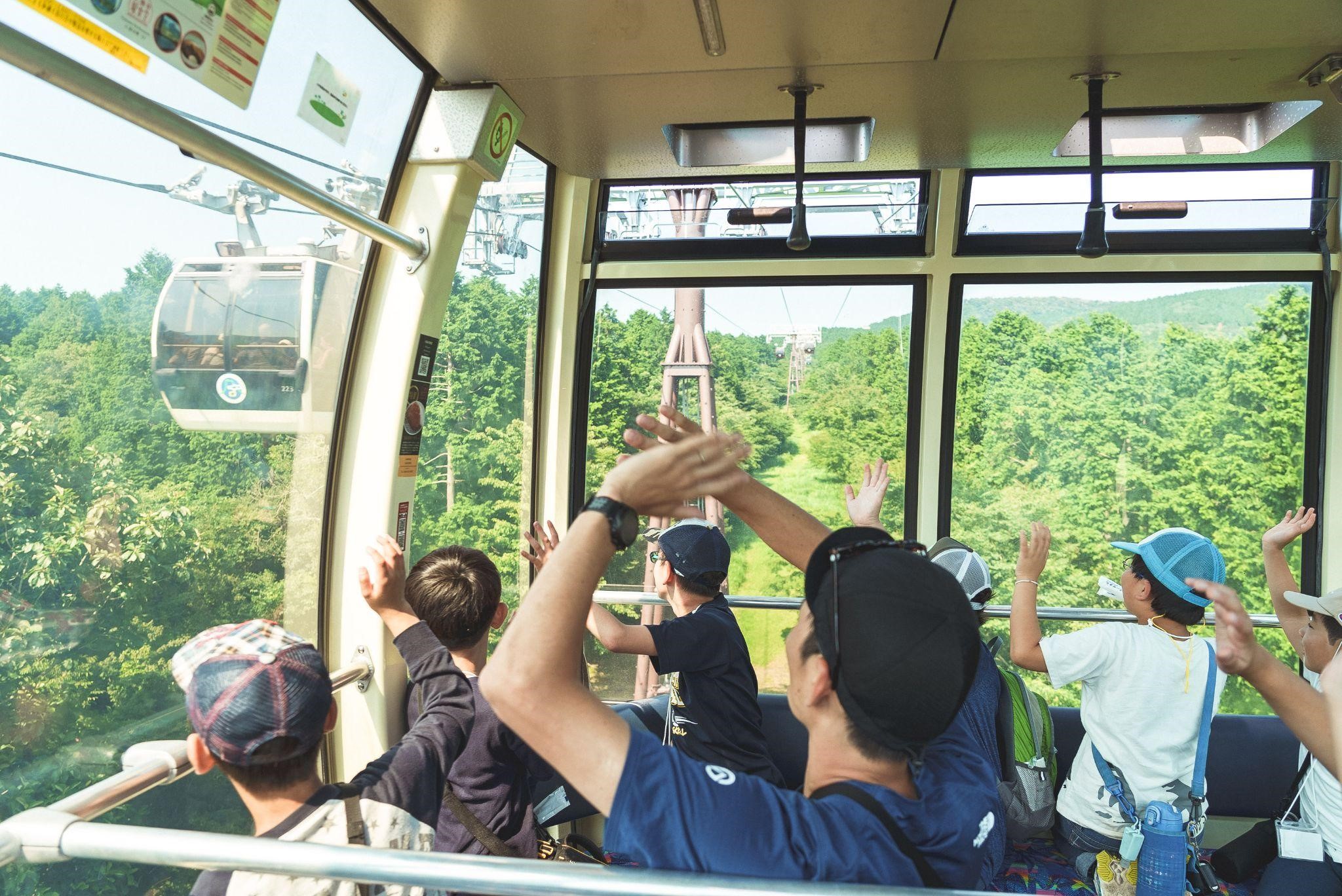
In the afternoon, we took the ropeway to the GeoMuseum in Owakudani.


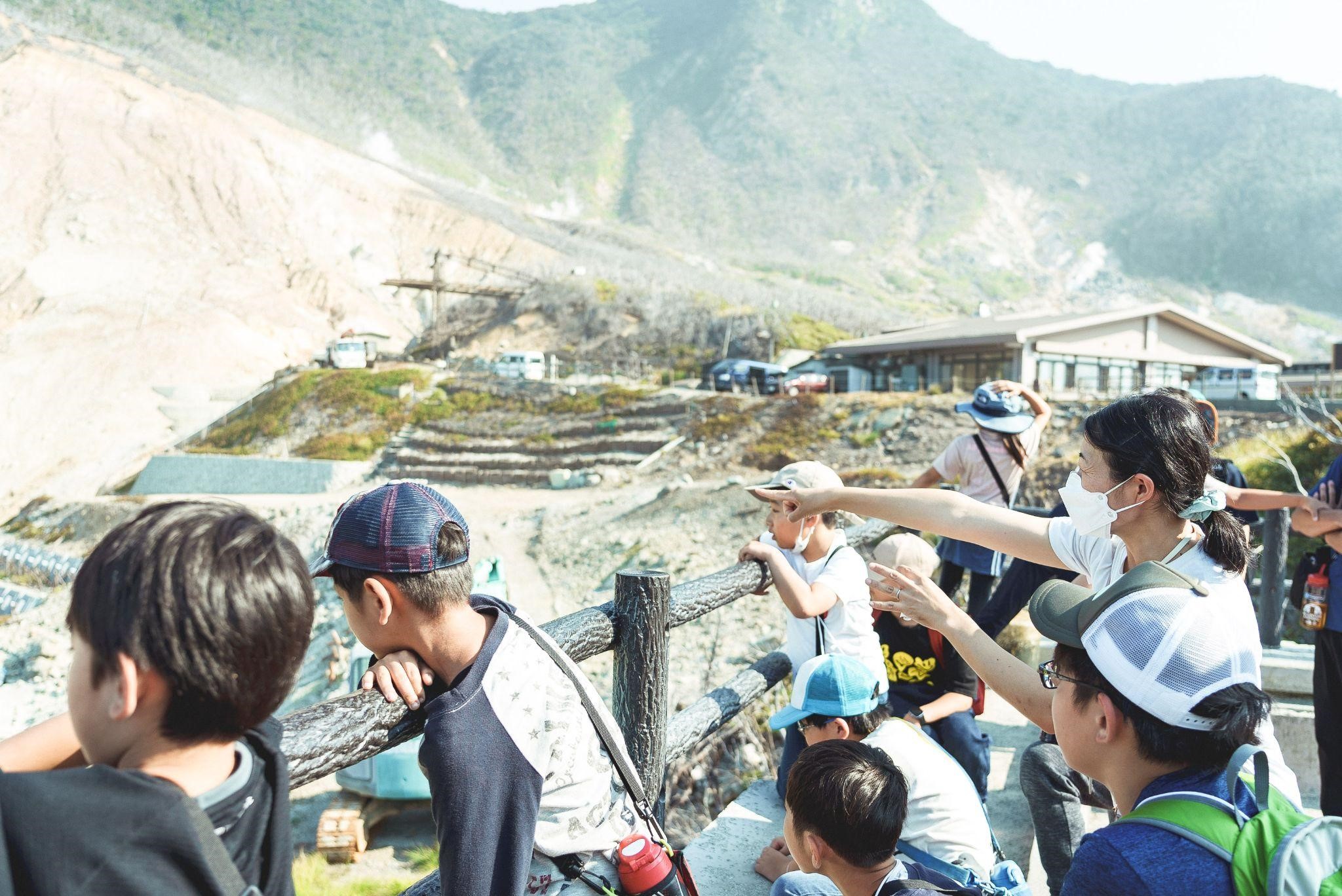
We learned about volcanoes and the formation of Hakone's landforms from Tamami, who also assisted us last night.
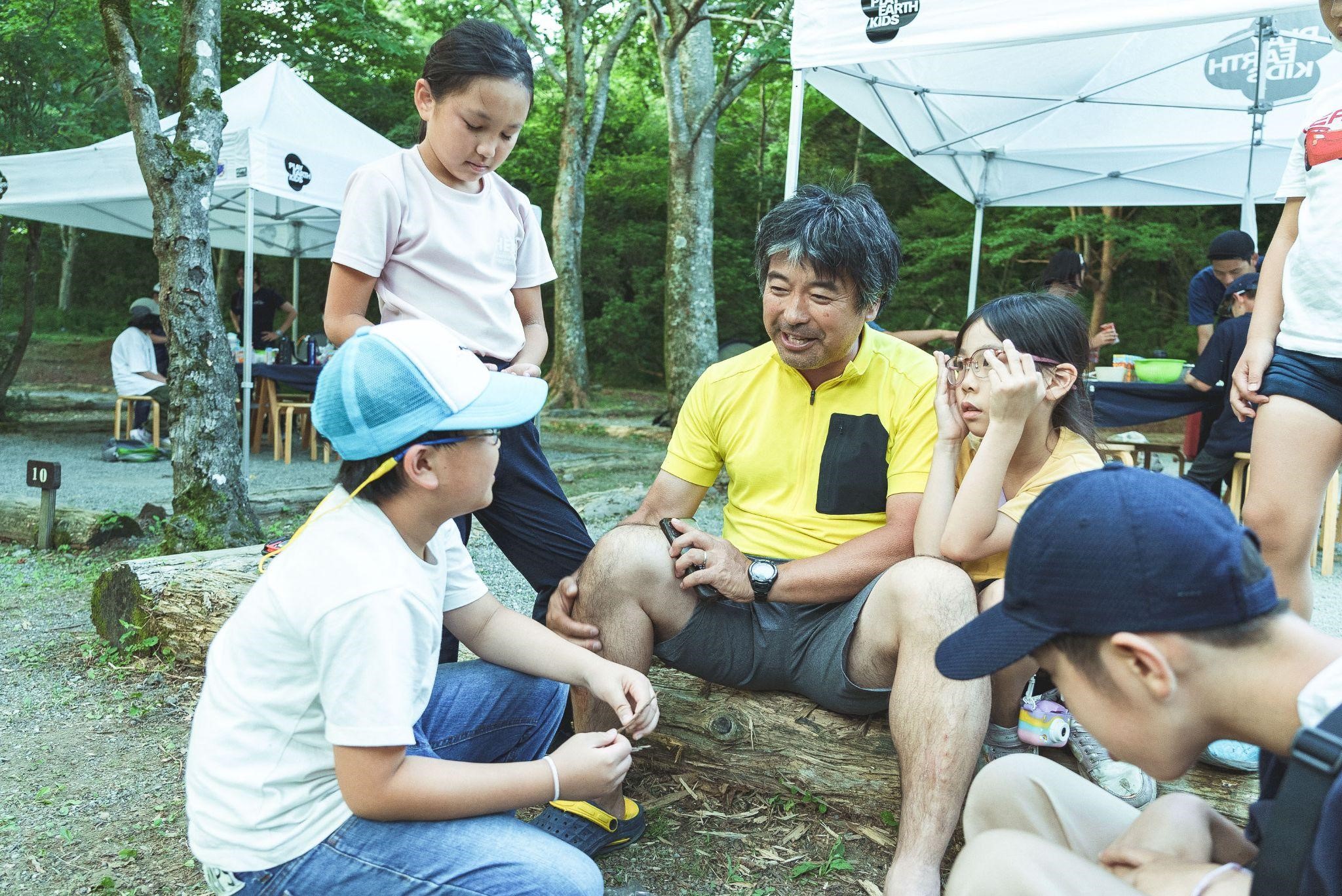
Even a few moments before dinner were spent catching insects and observing with a microscope.


For dinner, we enjoyed spaghetti bolognese.


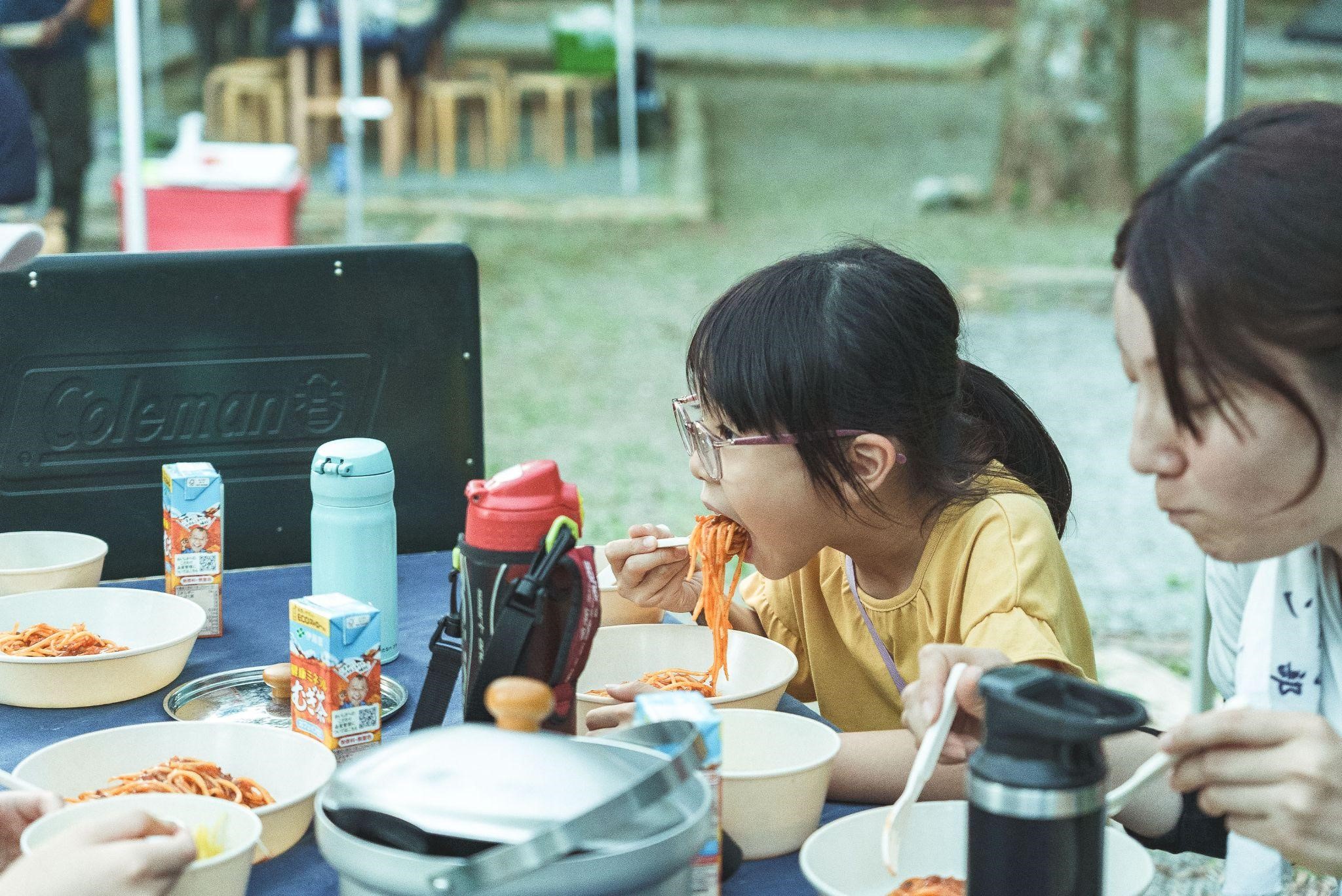
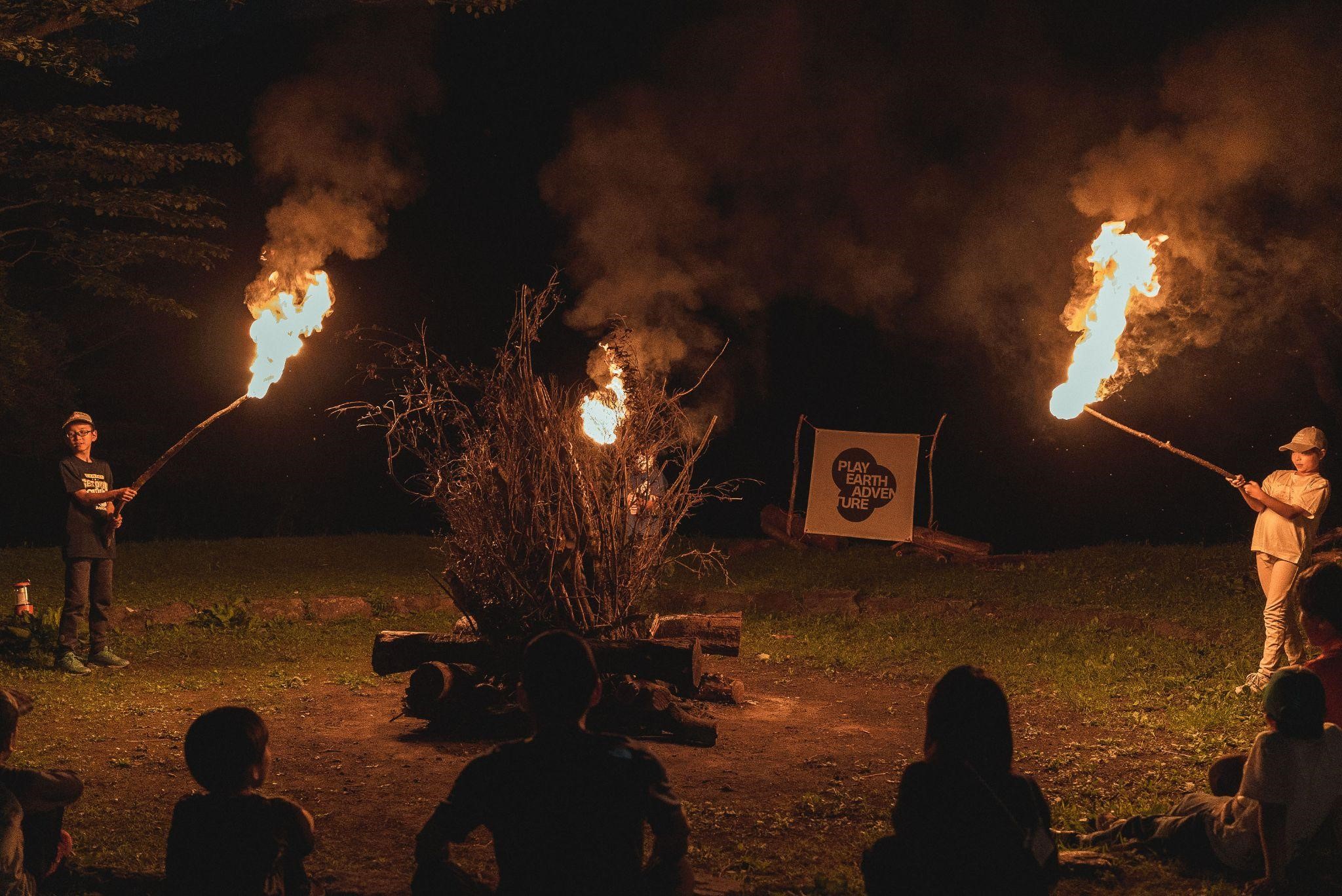
The delightful part after a nourishing meal was spending time around the fire!

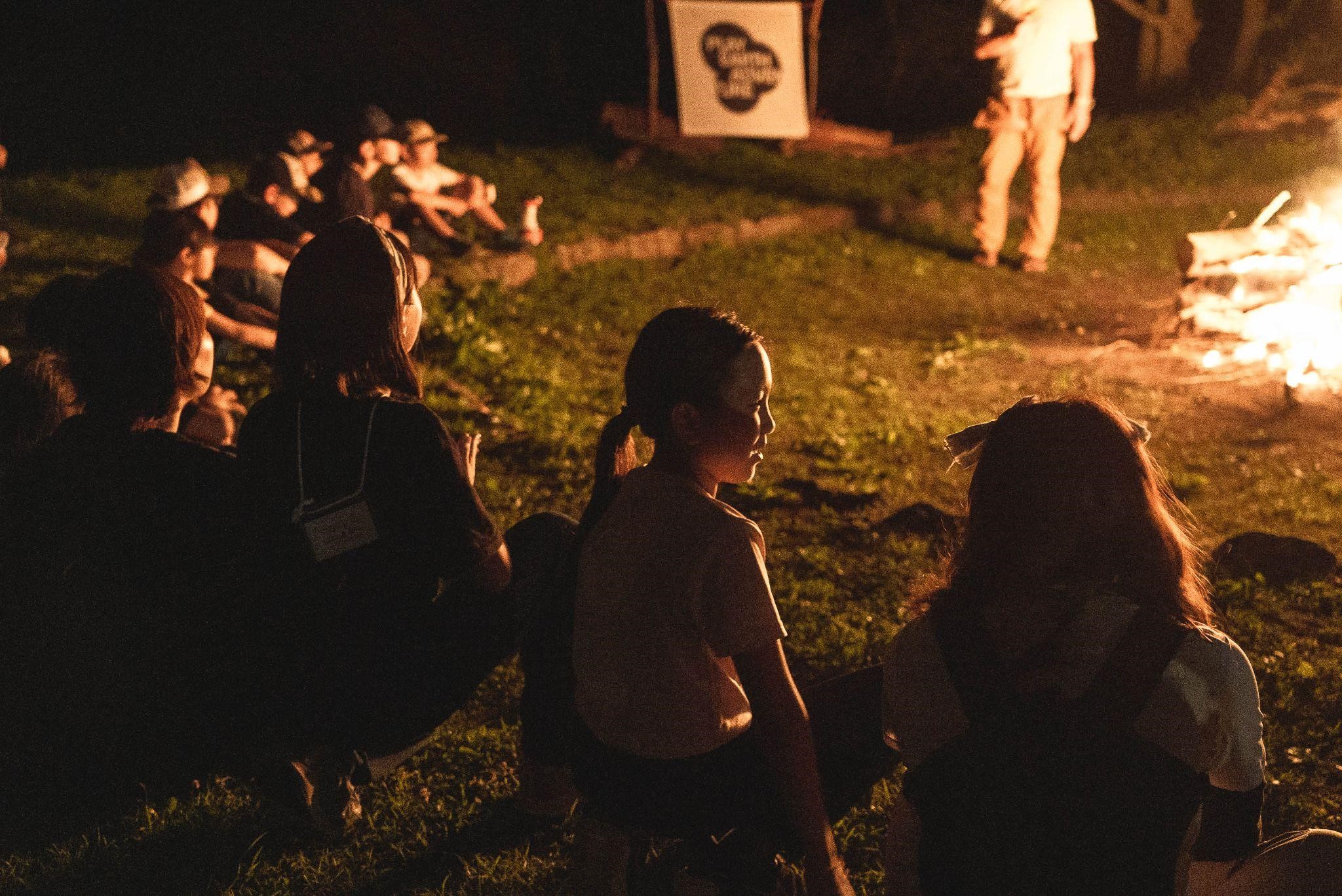

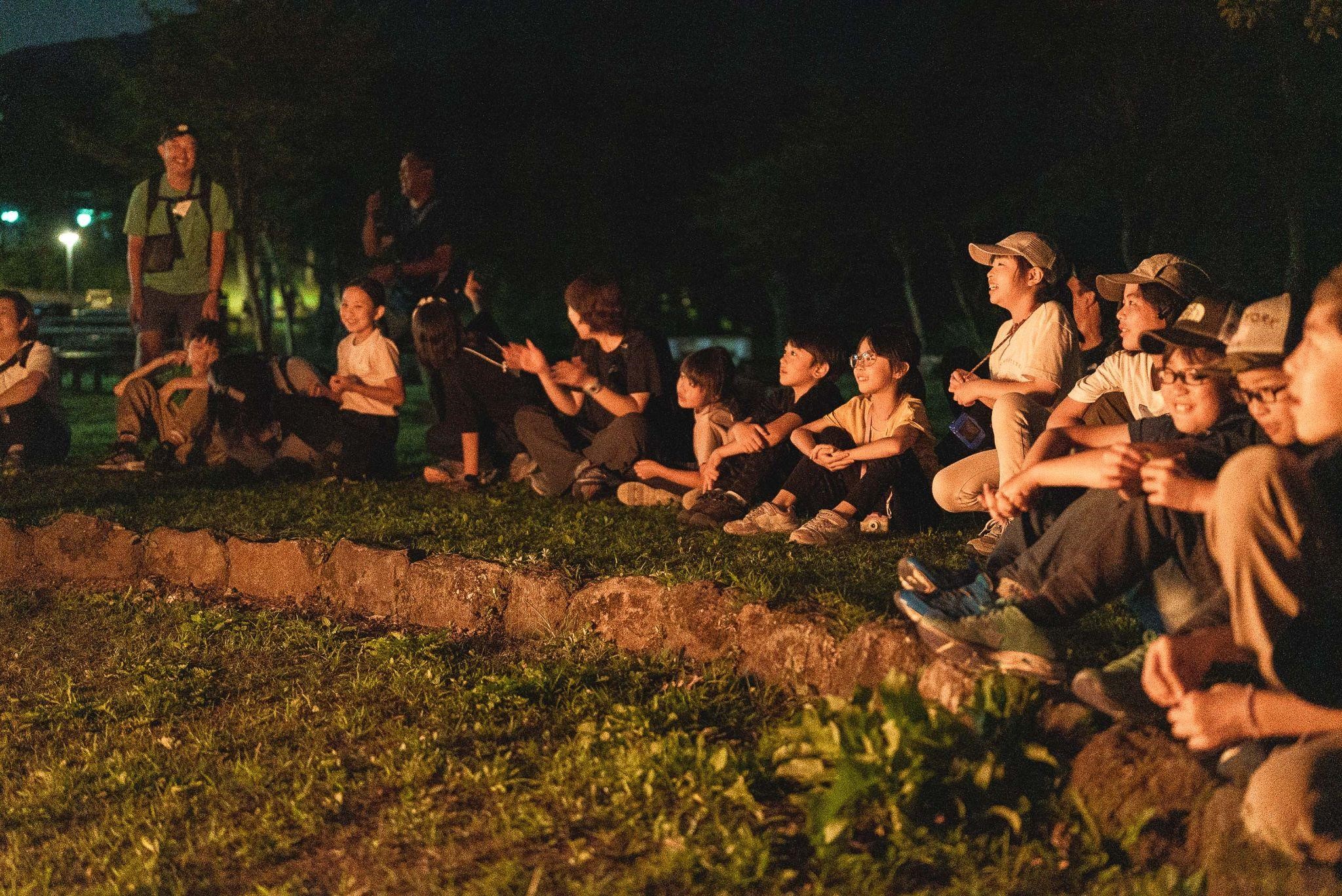
The flames lighting up the night sky will leave a lasting impression in everyone's hearts.
On the last day
The children were awake early again. The atmosphere running through them was visibly more intimate.
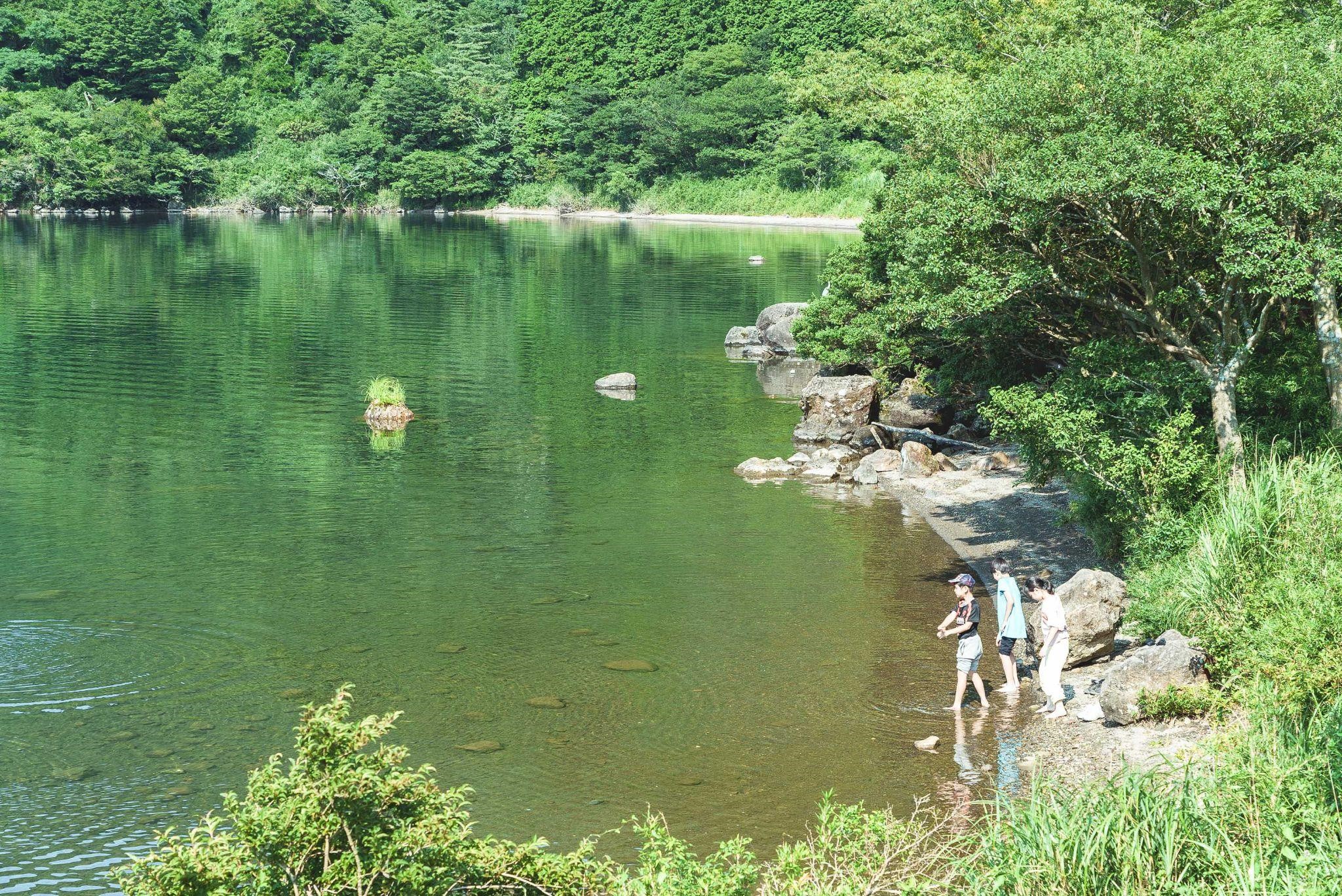
On the morning of the final day, the children woke up early to make the most of the remaining time. It must have been physically demanding.
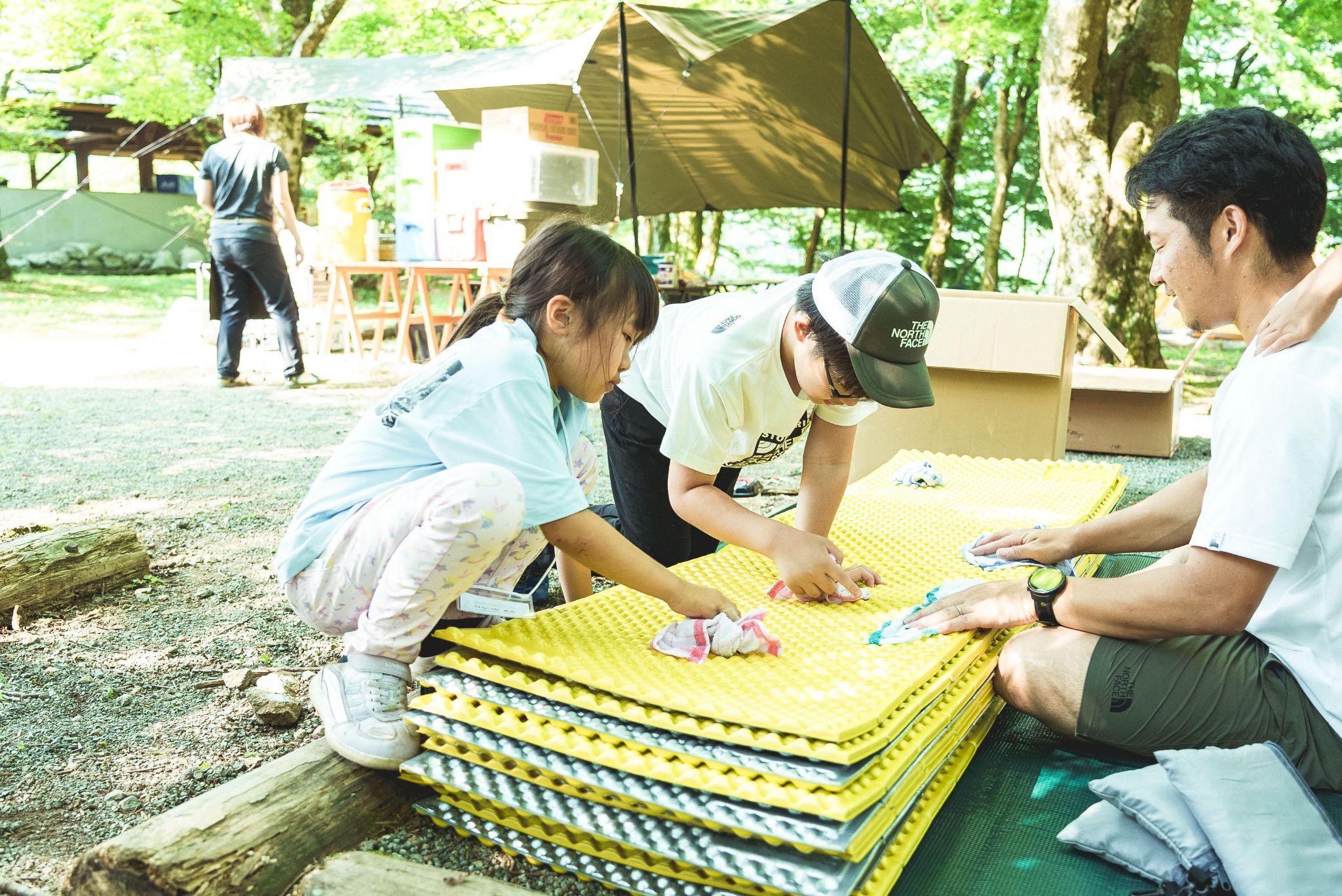
Yet, they assisted the staff in cleaning up

worked hard to prepare breakfast.

In the morning, we visited the fishery cooperative that protects and nurtures the fish of Lake Ashi. The Lake Ashi Fishery Cooperative has successfully cultivated kokanee trout, one of the few examples found anywhere in the country. The fish raised onsite and released to the lake better adapt to the environment and return healthier when they reach spawning time. The Lake Ashi Fishery Cooperative collects and fertilises the eggs by hand when they return to their river.
“Today, everyone is invited to feed them.” Yousuke Yuki of the Fishery Cooperative calls out to the children. What is interesting is that each species of fish has a different nature.
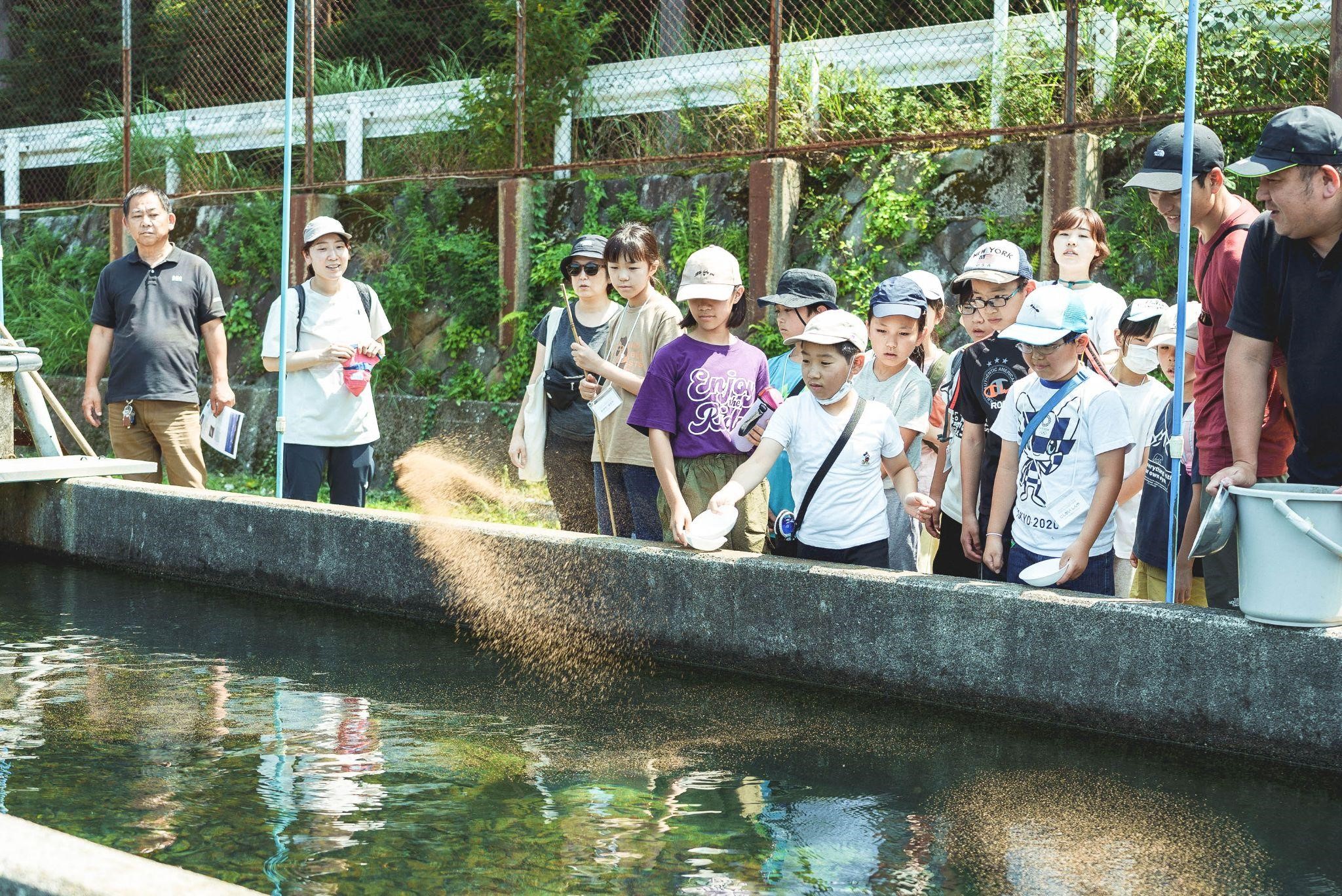
At the Lake Ashi Fishery Cooperative, we experienced feeding kokanee trout and other fish.

The children learned about the delicate ecology of fish and the richness of Lake Ashi that nurtures them.
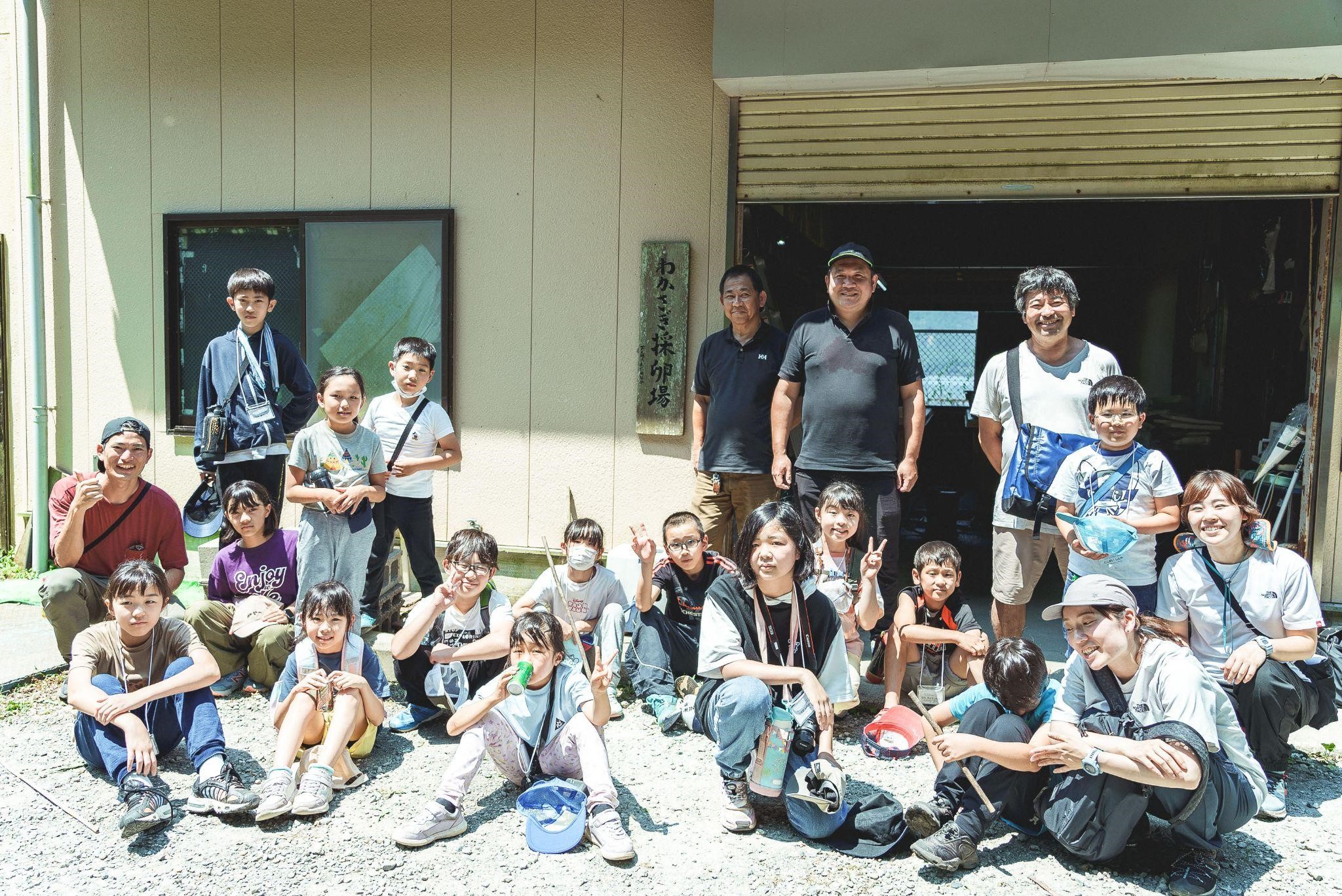
In the afternoon, the camp’s final program took place. It was a hands-on workshop on Hakone parquetry. Kanazashi Woodcraft produces trophies for the Hakone Ekiden every year. Nana brought the actual trophies to explain her passion for the craft and the techniques handed down for generations.

The instructor was Nana Kanazashi of Kanazashi Woodcraft.
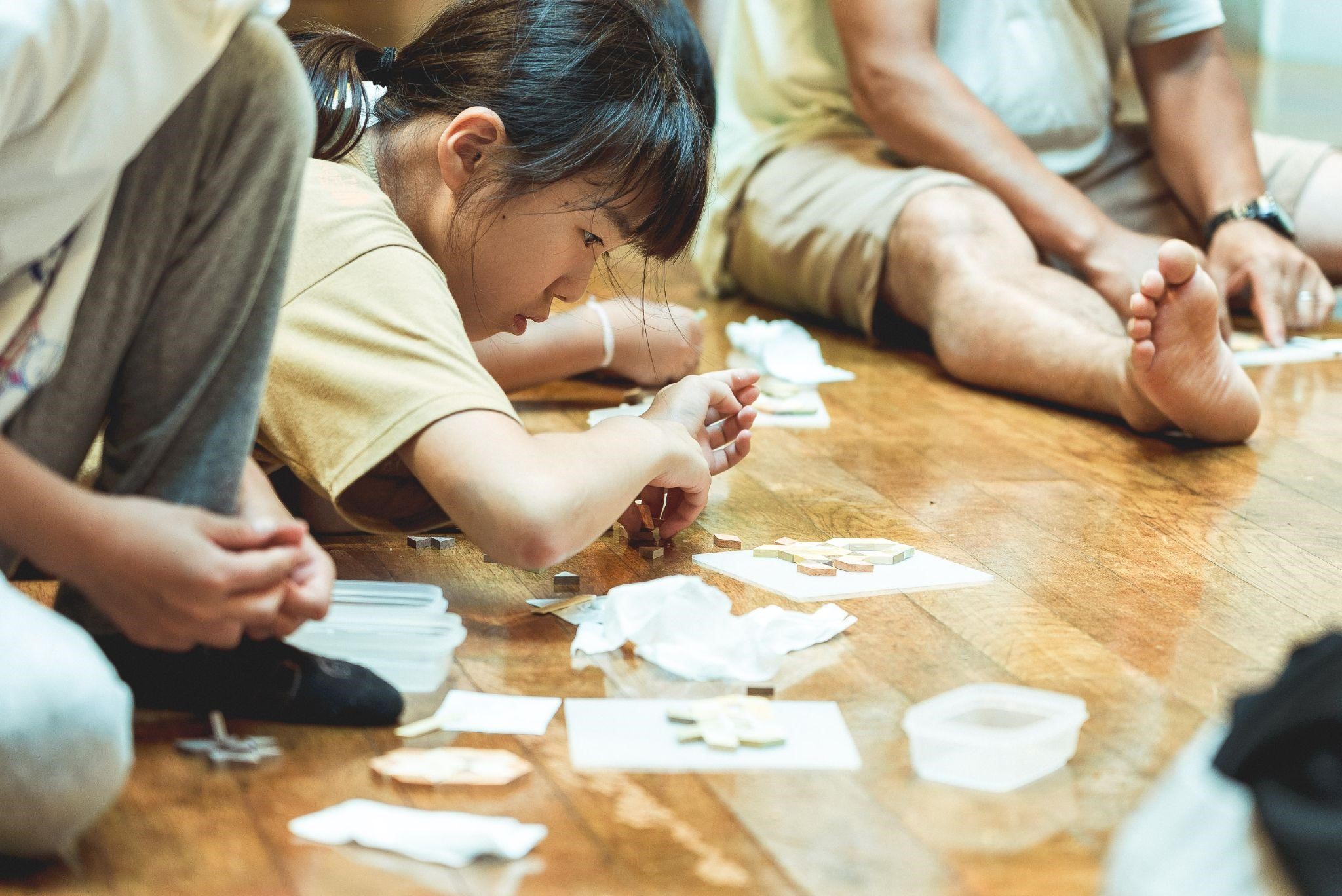
The children eagerly put the materials together as if cherishing the remaining time.
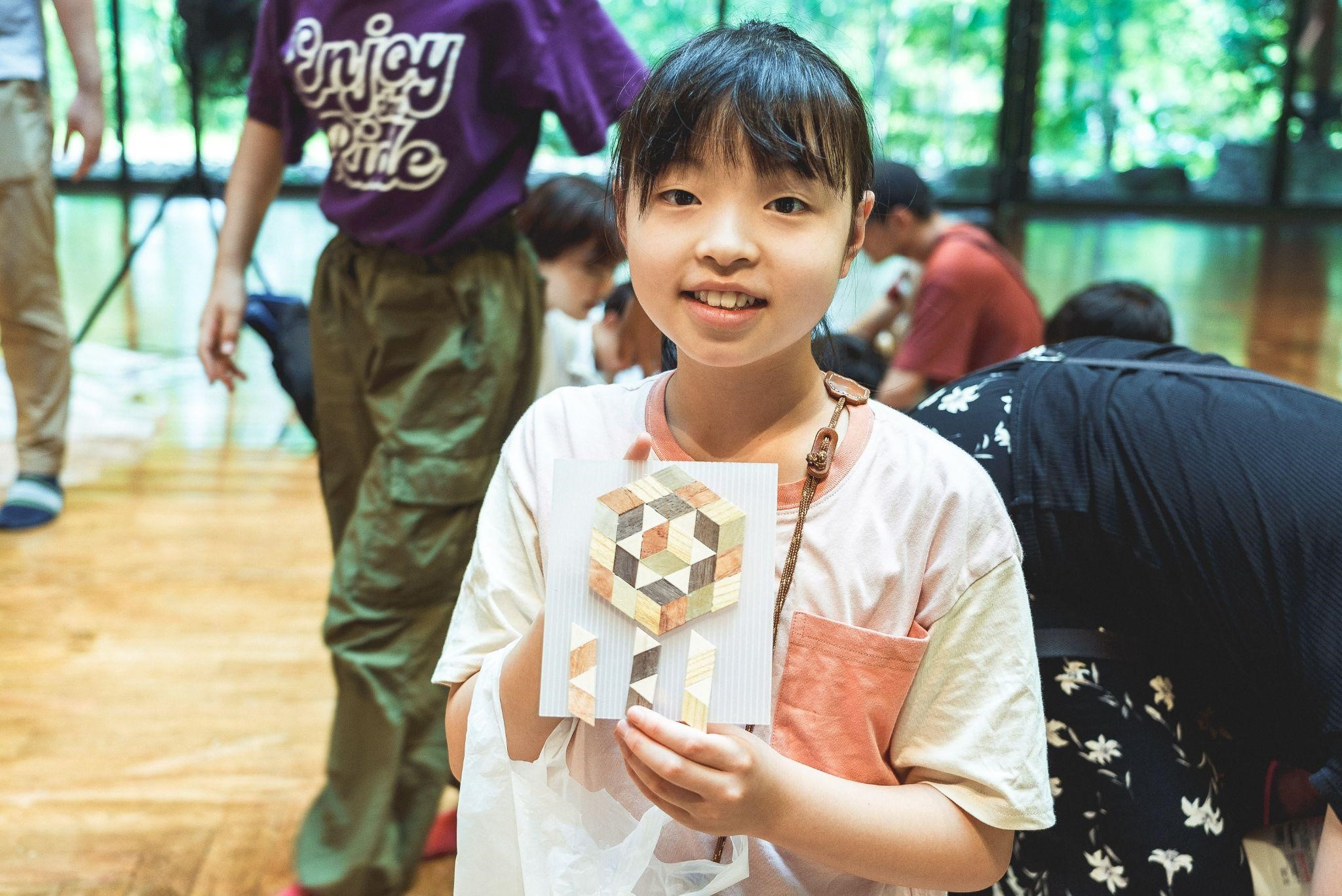
The last program was a traditional Hakone parquetry workshop. Everyone tried to match colorful materials through trial and error. Some children made souvenirs for their families.
Though small, brimming with determination and courage
During the first-ever camp last year, persistent wind and rain presented unexpected challenges. While these hurdles brought a distinctive sense of excitement and unity, the staff were left feeling that they could not fully offer an opportunity to experience Hakone’s natural environment. Perhaps that is why the staff’s commitment to this year’s event was so strong.
In an environment exceeding 30°C day after day, children spent extraordinary moments, moving energetically to the full.
The staff, fully understanding that sentiment, made flexible adjustments to the program while navigating different situations. Deep into the night, after the children had gone to sleep, they brainstormed ways to enhance next year’s camp. Someone whispered, “I wish there had been a camp like this when I was a child.”
After the second summer camp, Shinji Minakata of SOTOLABO, responsible for the camp’s operations, including meals and program management, and who demonstrated superb coordination, reflected on the camp. “This year, we were finally able to conduct the planned program, but truth be told, the ideal camp is one where children can naturally engage in what they need and want to do.” Shinji believes that this camp in Hakone could be closer to that ideal. So, for this year’s programme, he only instructed the children on what they needed to do and left their sense of time to them. In this way, he says, he instilled a natural flow of activity in the camp, rather than constantly directing their time. “The reason we successfully achieved that was due to the teamwork of the staff. Thanks to the close collaboration between GOLDWIN, Hakone Town, and the on-site staff, the children felt welcomed wherever they went. This created a strong sense of unity and stability.”
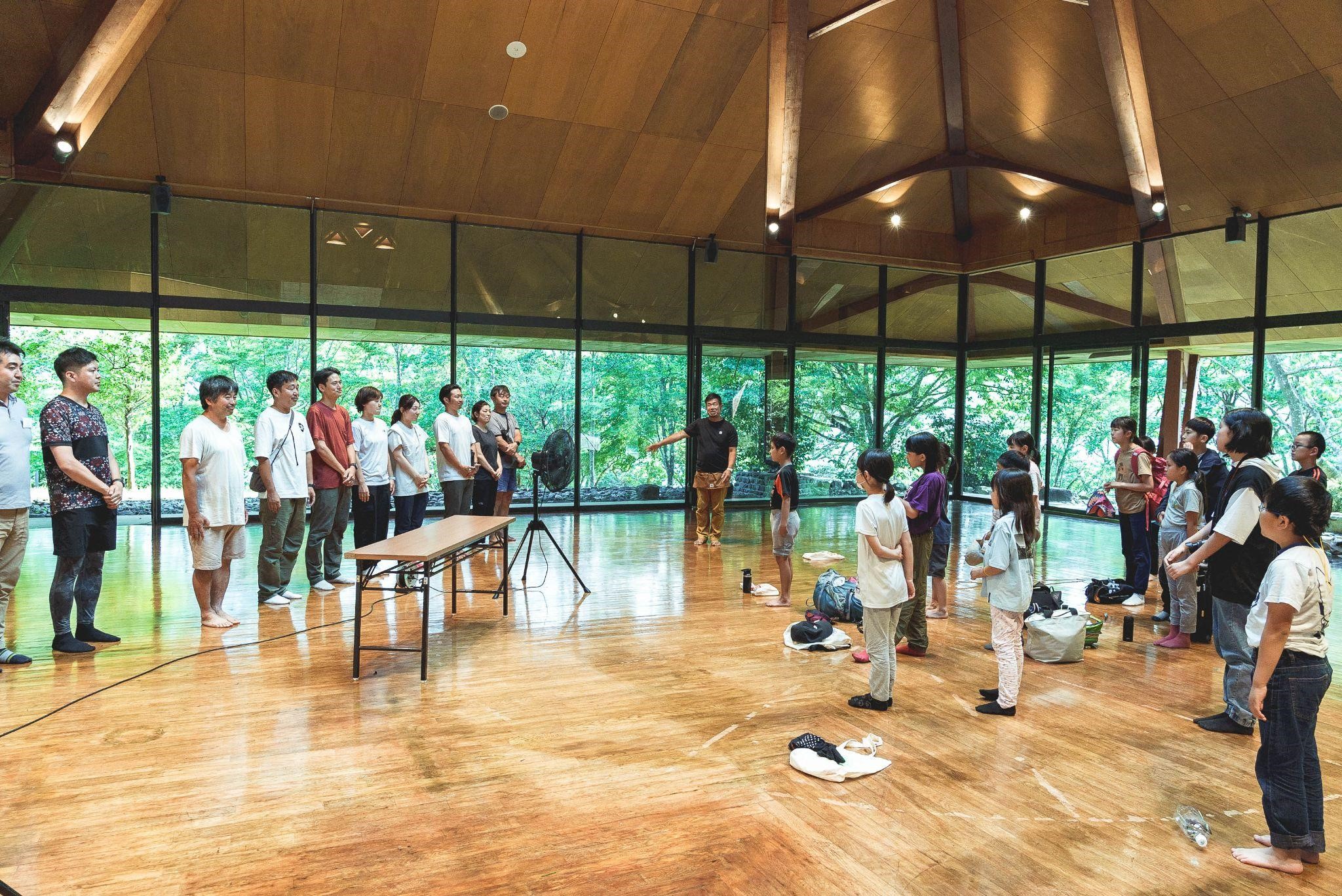
And then there was Gota Miura, who served as the North Star for the children. Over the past three days, he had been more active than any of the children, fully immersing himself in the camp experience. Gota mentioned that he holds a mentor dear to his heart. “When I was in second grade, I moved from Kanagawa Prefecture to Hokkaido. I only had two classmates and adjusting was difficult.” On the other hand, Gota loved living creatures and opened his heart to the nature of the northern country. Minagawa Kunio, a teacher at the school, watched over him. “He took us children to a self-sufficient camp, where we lived for five days in the forest with only a tarpaulin sheet and a few other simple tools. I still consider that camp the epitome of all camps; it’s something I wouldn’t be able to replicate today.”
Gota’s early impressions enable him to enjoy nature from the same perspective as children. With the assistance of adults who love nature, he built his own foundation and expanded the wings of his heart. It is this experience that serves as the source of Gota’s extraordinary love for camps and children. Shinji Minakata smiles as he says that Gota is the leader, guiding the children with his enthusiasm, and he himself is like a base camp that consistently supports us. “Not only last year, but this year as well, some of the sixth-grade children have asked if they can join when they reach junior high school. I hope that eventually, with the help of those who have spent the same time here, we can make the camp even more appealing to children.”
During the three-day camp, the children displayed innocence and resilience at times. Before the camp, Mitsuhiro Fujimura of GOLDWIN heard this from a parent: “My child can’t do anything at home, so I’m a little worried about him.”
Because of this, Mitsuhiro kept an eye on the child. However, when the camp started, the child was seen helping a newly met friend carry his belongings and lending a shoulder to a fellow camper who had grazed himself.
These were three exceptional days spent in nature with adults and children who don’t know each other. There were activities one could only experience in an extraordinary moment. But the experiences gained here will connect the ordinary life with the extraordinary moments. From a parent’s perspective, children may appear less independent. However, as adults who witnessed these young people, we were reminded that behind their small frames lie abundant will and courage.
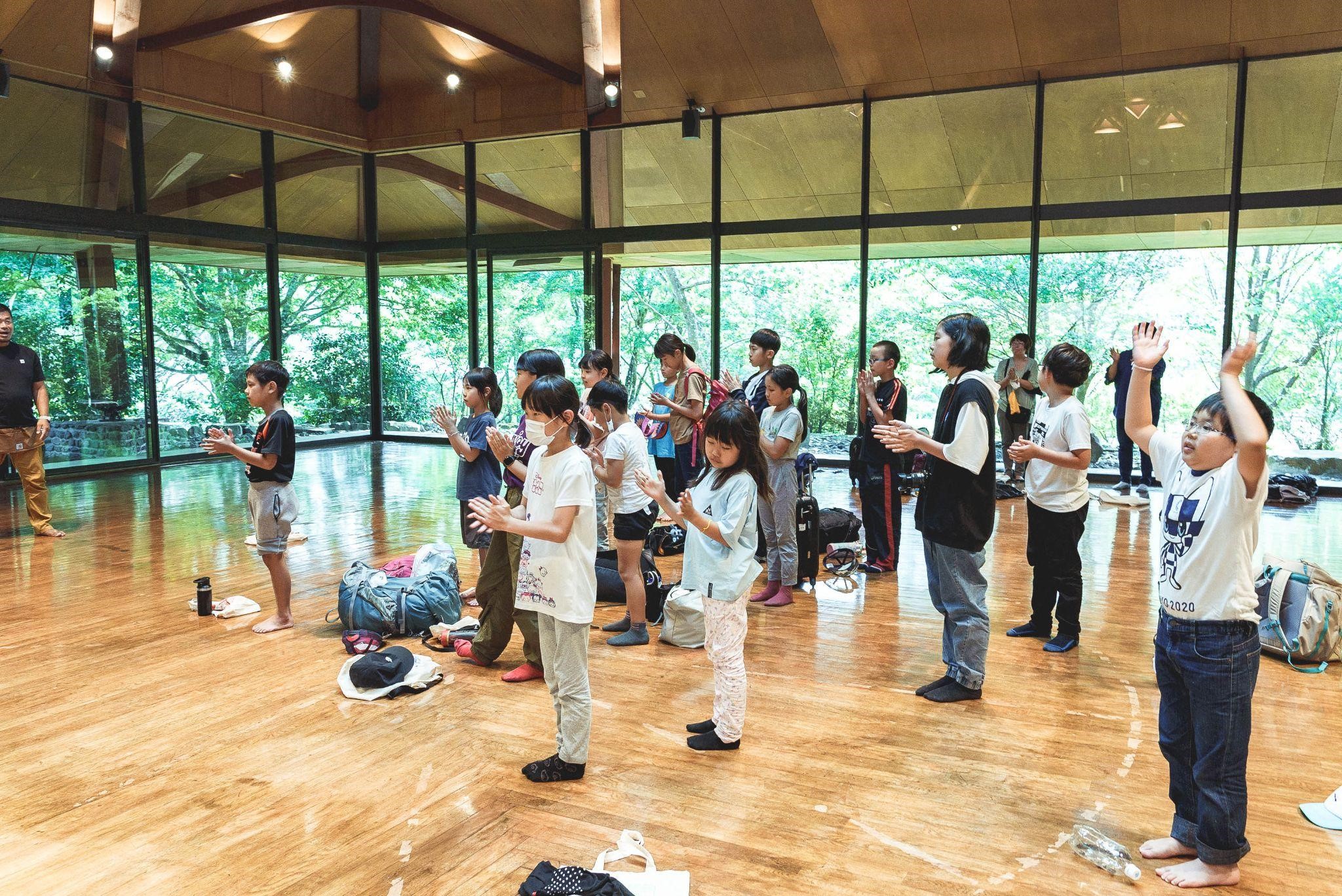
The camp, blessed with sunshine, ended with splendor.
Text=Koki Aso
Photo = Masaya Kudaka
Translation = Asaka Barsley
Direction = Shin Kaneko
Interview cooporation = Hakone Town, GOLDWIN, SOTOLABO, NIKON VISION



